Matador Network's Blog, page 438
August 2, 2022
The 7 Best Comic Book Cafes in Buenos Aires for Pop Culture Fanatics

Buenos Aires is an international hub for excellent cafes and coffee culture. The city is famous for its timeless cafes that have been serving coffee and cakes to Porteños (locals of Buenos Aires) since the mid-19th century. These cafes rival the best establishments in Vienna or Paris. What many people don’t know is that the city is also home to a community of people who love comic books. Several comic book cafes where those people can gather to read illustrated stories have sprung up around Buenos Aires.
In Buenos Aires’ comic book cafes, baristas and store owners team up to bring you an experience that blends the city’s famous cafe culture with pop-culture. At these cozy spots, you could easily find yourself spending hours sipping a super hero-themed cappuccino while reading your favorite manga or unpacking a new collectible. Many of these cafes are inspired by Japanese cafe culture, and feature not just traditional comics on their shelves, but anime, manga, and graphic novels.
With Marvel movies at their absolute peak of popularity, Star Trek and Star Wars both receiving the reboot treatment, and a slew of DC movies upcoming in theaters, there’s no better time to explore the wide and wondrous world of comic books and nerd culture. You’d be lucky to do it in Buenos Aires, a city full of wondrous architecture and history.
Take a break from exploring the Plaza de Mayo, the iconic Casa Rosada palace, and the glamorous Teatro Colón opera house, to relax at one of these comic book cafes with your favorite edition and a cup of strong coffee.
Comic book cafes in Buenos Aires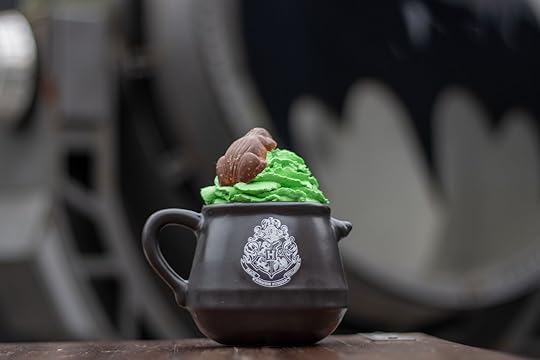
A Harry Potter themed beverage served at Knowhere Collectibles. Photo: Samantha Demangate
Ao Kuma Cafe
Photo: Samantha Demangate
Tucked in the vibrant Palermo neighborhood is Ao Kuma Cafe. Inside, customers can order specialty coffees and treats designed like popular anime characters. Stacked along the cafe’s walls are volumes of manga, all translated into Spanish.
Japanese cafe favorites lend inspiration to Ao Kuma’s menu. You can find savory dishes like oyako-don, homemade onigiri, and Japanese curry. Customers with a sweet tooth can find soft puff pastries filled with refreshing lemon cream shaped like hatchlings, mochis, and Japanese sweet bread known as melonpan.
What also attracts customers is Ao Kuma’s welcoming atmosphere. Fans of coffees, manga comics, and Japanese cuisine line up outside Ao Kuma daily, patiently waiting to get a table. Once you’re inside, you’ll realize why Ao Kuma has become one of Palermo’s most popular hangout spots.
Where: Fray Justo Sta. María de Oro 2280, C 1425 CABA
Knowhere Collectibles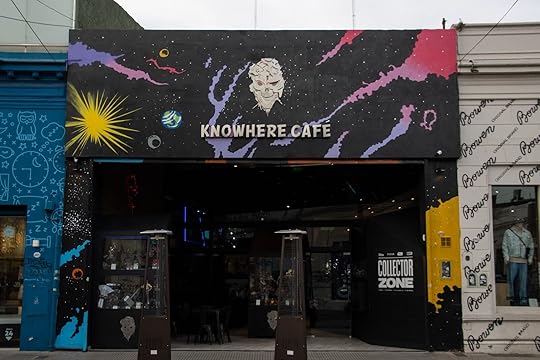
Photo: Samantha Demangate
Both Knowhere Collectibles cafes are located in the Palermo neighborhood, and are full of life-sized collectable figures from the MCU and DC Universe. Fans of comic and pop-culture characters can come to purchase, unbox, and show off their collectables. The cafes also host several events around the year which celebrate movie releases by serving themed drinks and other promotions to attract comic book enthusiasts.

Photo: Samantha Demangate
Originally a collectables store, as its name might suggest, Knowhere Collectables grew into a staple of the city’s cafe scene. Nowhere else can you enjoy a cortado (espresso with milk) and a fluffy pastry while sitting next to a towering Jurassic Park velociraptor and a Boba Fett statue. Besides their two cafes, Knowhere Collectables also has a superhero themed sit-down restaurant called Knowhere Gallery that serves food and cocktails.
Where: Honduras 5720, C1414 CABA and Honduras 4925, C1172 BMO, Buenos Aires
Momo Manga
Photo: Samantha Demangate
The latest manga cafe to open during the pandemic in Buenos Aires is Momo Manga Cafe. The cafe is hidden on the second floor of an office building in the neighborhood of San Nicolás. You need reservations to grab a comfy bean bag seat in their cafe but customers can drop in anytime to purchase the shop’s manga-themed merchandise.
Momo Manga teamed up with several small companies and local artists to sell its anime and manga themed merchandise inside their cafe. Once you reserve your table, you can also enjoy their wonderful menu of teas, coffees, and food, all served in a cozy environment. Every weekend, Momo Manga serves a rotating menu of traditional Japanese pastries.
Momo Manga is easy to miss. Outside there are currently no signs other than plastered manga pictures on the windows above you and the adorable momo (peach in Japanese) icon. To get inside, ring the doorbell and the clerk will let you in.
Where: 9JV7+MF Buenos Aires
La Revisteria Comics & Coffee
Photo: Samantha Demangate
In the bustling central neighborhood of Buenos Aires, is the popular La Revisteria Comics & Coffee. Just blocks from the Galerías Pacifico mall and the city’s famous performing arts centers, the cafe and comic book store is one of the city’s largest comic book cafes. The company built the cafe following a wave of interest in comic cafes in the city.
La Revisteria has three floors with an attentive team of comic experts on hand to answer questions. Fans of everything from Marvel to Naruto can find their favorite comic books stacked high and perfectly organized in neat rows on towering shelves. Like many bookstores in the city, their collections are stacked so high that employees need to use ladders to access their full catalog.
Where: Florida 719, C1005 CABA
Hero Anime Cafe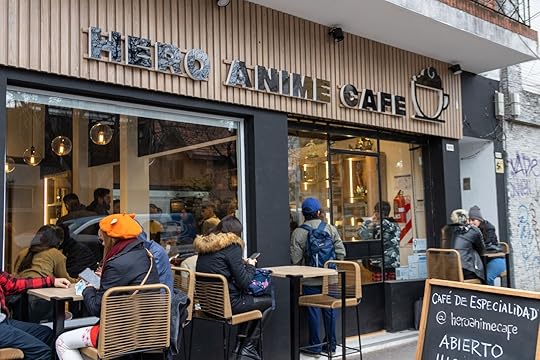
Photo: Samantha Demangate
The Palermo neighborhood has a monopoly on comic cafes and Hero Anime is one of the most beloved. For Porteño manga fans, this cafe has everything: great coffee drinks and snacks, friendly and attentive staff, and an ambiance that was created by manga fans for manga fans. Characters from Dragon Ball Z, One Piece, and many others adorn the walls. If you’re new to manga, don’t worry. Their knowledgeable baristas will eagerly help you discover your new favorite manga to read with your coffee.
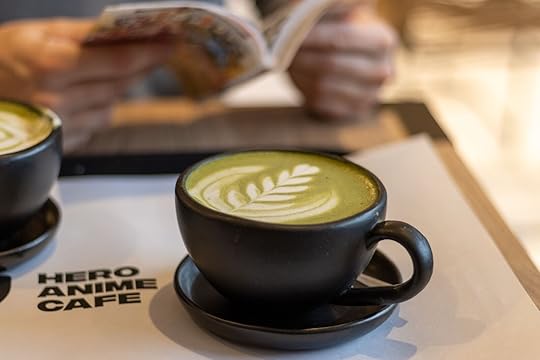
Photo: Samantha Demangate
Hero Anime opened on June 4, 2022 by two friends and colleagues who wanted to create a place for people to enjoy manga while drinking coffee. Since their opening, Hero Anime has become one of the most popular cafes in Palermo. You don’t need reservations for Hero Anime Cafe, but because of their popularity, it’s best to get in early so you can find a seat.
Where: CH86+WG Buenos Aires
VHS Cafe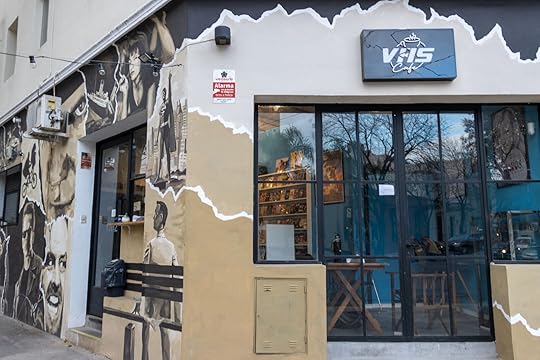
Photo: Samantha Demangate
Although they don’t have comics, VHS Café in Palermo is a must-visit destination for pop culture aficionados. Nostalgic VHS tapes and movie posters from the 80s and 90s cover the walls, harkening back to old-school VHS stores and Blockbuster video rental stores. You can browse through famous Hollywood classics like Die Hard and Ghost on VHS while enjoying their delicious home-brewed coffee and munching on alfajor cookies.

Photo: Samantha Demangate
VHS Café is made extra special by its warm atmosphere and friendly baristas. The cafe has become a local hang out spot where neighbors come to grab coffee and share tables with movie fans and coffee aficionados.
Where: Fray Justo Sta. María de Oro 1702, C1414 CABA
Arkyn Helados
Photo: Samantha Demangate
Who doesn’t love ice cream pops, especially when they come in your favorite superhero designs. Arkyn Helados is a comic-themed cafe that serves ice cream pops featuring famous logos of heroes and villains from the DC and Marvel universes. Flavors like dulce de leche Yoda pops and white chocolate Joker pops keep kids and nerd culture fans excited.
The cafe is outdoors and close to Palermo’s popular park and picnic hub Plaza Inmigrantes de Armenia, making it the best comic book cafe to enjoy during the city’s humid and festive summer. When the summer heats up, their ice cream and coffee drinks are seen all over the neighborhood.
Where: Soho, C1414DGG, Jorge Luis Borges 1997, C1425 CABA 
Patagonia Hip Packs Are the Travel Accessory You Didn’t Know You Needed

Fanny packs were a style staple of the 90s, but just because you’re not sporting a Lizzie McGuire-themed fanny pack to the first day of 5th grade anymore, doesn’t mean the accessory is “so yesterday.” In fact, fanny packs — call them hip packs if you must — have never been more in style than they are right now. Whether you’re simply taking a city break holiday and need somewhere to safely store your wallet, keys, and phone, a beach vacation and need a reliable sunscreen pouch, or a pack for holding your essential tools for a rugged fishing excursion, fanny packs weren’t just a fad; they’re immensely practical for the modern traveler. It should come as no surprise that Patagonia, a leader in the travel and outdoor accessory space, makes some of the most versatile fanny packs on the market. These are our favorite Patagonia fanny packs.
We hope you love the Patagonia fanny packs we recommend! Just so you know, Matador may collect a small commission from the links on this page if you decide to book a stay. Listed prices are accurate as of the time of publication.
UltraLight Black Hole Mini Hip Pack 1L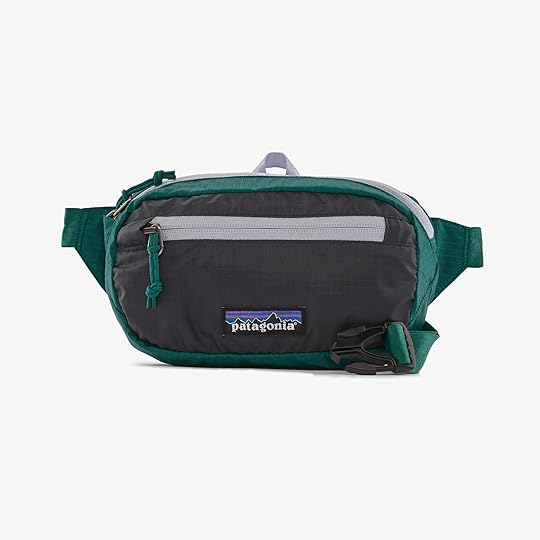
Photo: Patagonia
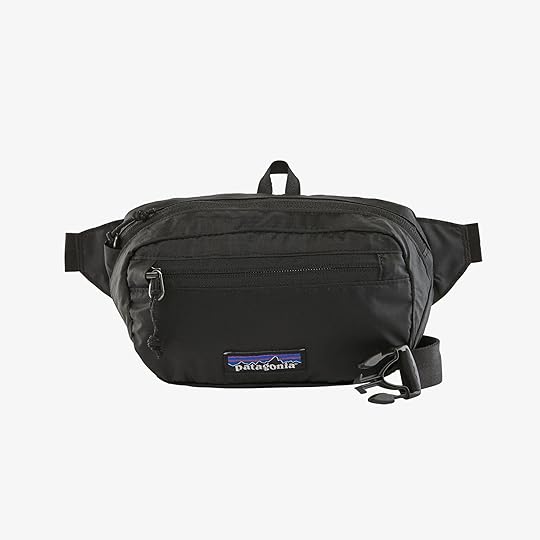
Photo: Patagonia
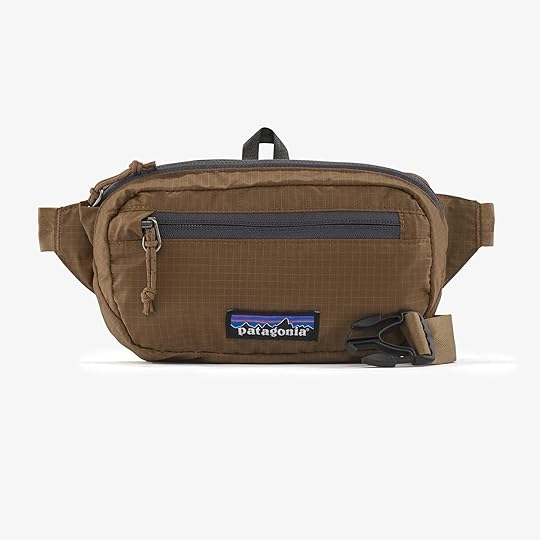
Photo: Patagonia
The UltraLight Black Hole Mini Hip Pack is one of the most popular Patagonia fanny packs. Made of lightweight recycled nylon, this pack is weather resistant and stuffs easily into its own pocket for storage. It has two pockets for organization – a main compartment, and front zipper security pocket that doubles as a stuffsack.
Price: $29
Stealth Hip Pack 11L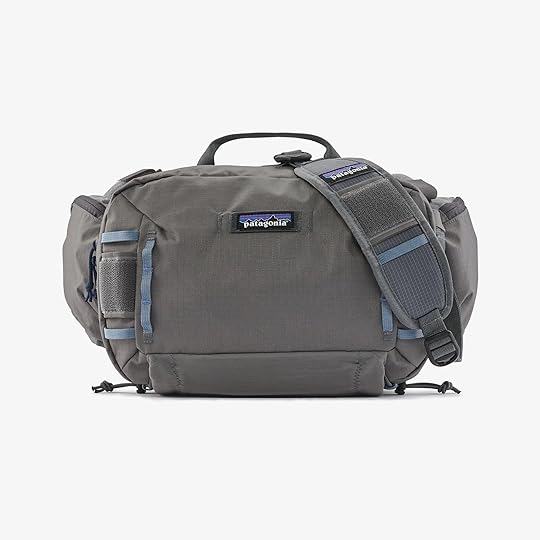
Photo: Patagonia
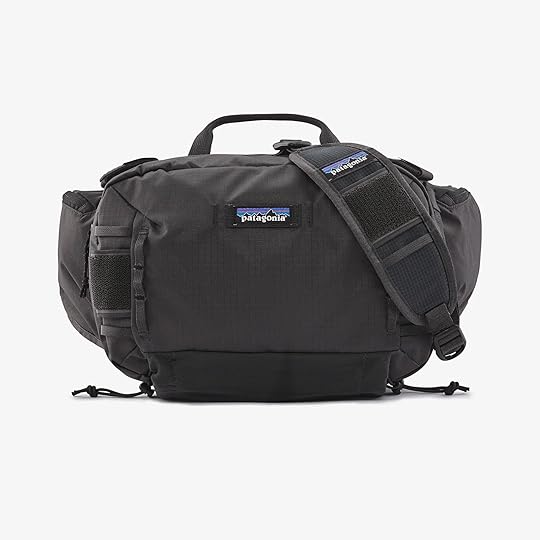
Photo: Patagonia
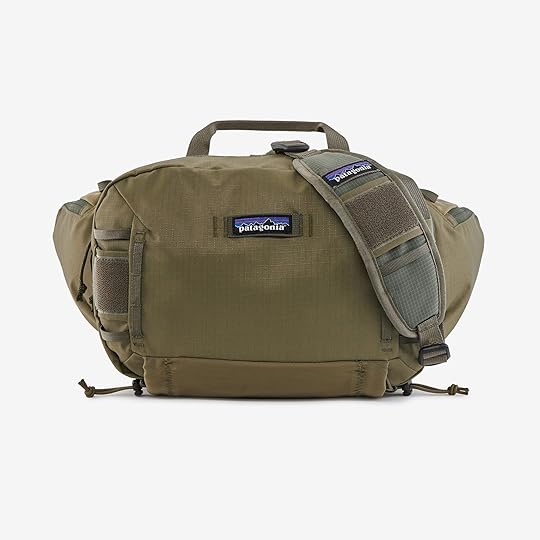
Photo: Patagonia
Perfect for fishing, the Stealth Hip Pack is designed to allow you to move quickly and nimbly in water without sacrificing storage space. The water-resistant hip pack is lightweight, conforms to your body, and won’t get in the way of your casting. Comfortable for all-day use, it has a large main compartment divided to organize fly boxes and other fishing implements, zippered pockets on the belt for smaller items, and integrated magnets on the front to hold flies, nippers, or hemos.
Price: $159
Black Hole Waist Pack 5L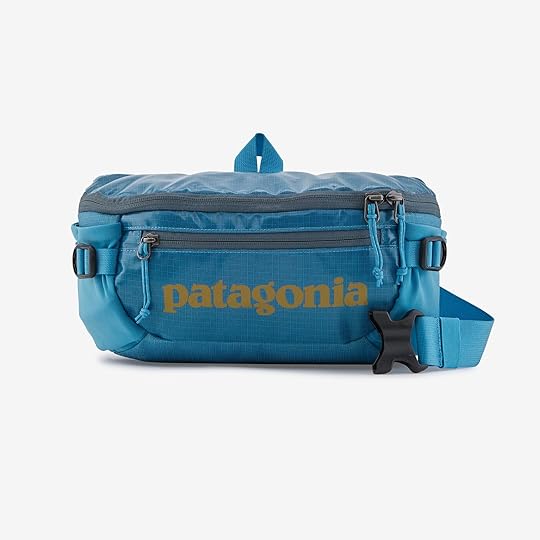
Photo: Patagonia
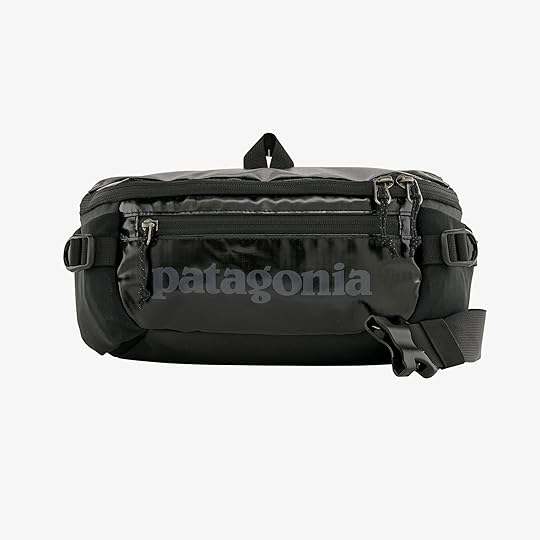
Photo: Patagonia

Photo: Patagonia
This single-compartment 5-liter waist pack is one of the best Patagonia fanny packs for hiking. With stretch water bottle pockets, an interior mesh pocket, and front zippered pocket, there’s plenty of room to hold water and snacks. There are also compression straps to keep the pack tight against your body, and a breathable mesh lumbar panel for carrying support while you’re out on the trail.
Price: $59
Dirt Roamer Mountain Biking Waist Pack 3L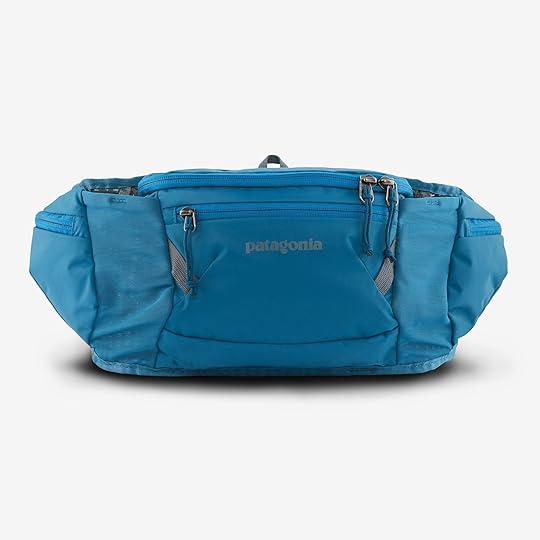
Photo: Patagonia

Photo: Patagonia
Ideal for mountain biking and other on-the-go activities, the Dirt Roamer Mountain Biking Waist Pack is defined by its bounce-free benefit. Two water bottle holders are nested between pack pockets, so you don’t have to worry about anything coming loose, while air mesh material maximizes comfort and breathability. Holding up to three liters, the pack is made of rugged 100 percent recycled nylon, with three high-volume pockets dispersing the weight for more stability.
Price: $69
>h2>Guidewater Hip Pack 9L
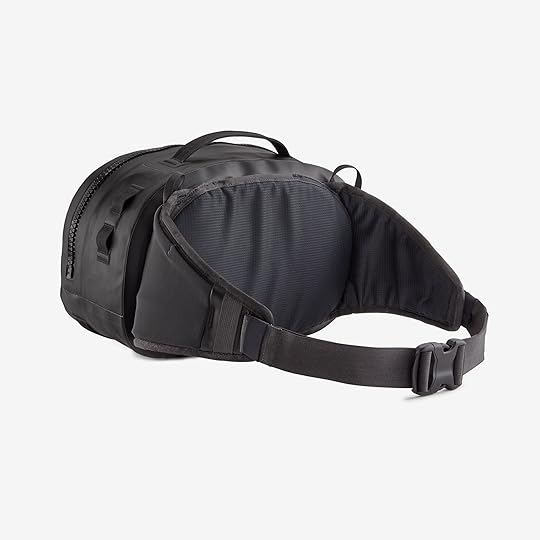
Photo: Patagonia

Photo: Patagonia

Photo: Patagonia
Watersports enthusiasts need look no further than this hip pack. The Guidewater Hip Pack is fully waterproof submersible, keeping your belongings dry even when underwater. It has an internal organizer pocket that separated small items from main compartment contents, and which can be transferred to external lash points when more convenient access is necessary. Nine liters of storage space give you enough room to fit line and tackle, emergency supplies, and maybe even a lukewarm beer. The pack is not currently available, but will be soon – your best bet to snag one of these is to join the waitlist now. 
Price: $229
More like thisTechnology + GearTortuga Setout 45L Is the Best Travel Backpack for Your MoneyTwo Picture-Perfect Memphis Hotels That Will Set the Tone for Your Next Visit

Selecting a Memphis hotel involves more than just picking a place to crash. Memphis is hot, and you’ll want to take refuge in a clean, comfortable, well-air-conditioned hotel where you can relax while keeping the entertainment coming.
For some, that might mean a hotel that’s up on all the latest design trends like The Memphian, while for others that might mean accommodations that focus on historical aspects like The Peabody. Both are cushy and luxurious in their own way, and both can set the tone for the type of Memphis vacation you want to take.
We hope you love the hotels we recommend! Just so you know, Matador may collect a small commission from the links on this page if you decide to book a stay. Listed prices are accurate as of the time of publication.
The Memphian: A trendy, photo-ready Memphis hotel
Photo: Nick McGinn
Opened in May 2021, The Memphian is everything you’d expect from a new luxury hotel located in a recently gentrified area, and it was designed with photo opportunities in mind.
Surprisingly, the exterior is nothing to write home about. The paintwork is a two-tone neutral and the architecture is rather plain. It’s obviously a new-build, but there are touches of 1920s hotel design with a marquee lit up with Broadway-style lights and a few arched windows.
All that changes when guests step in the door. The lobby is an explosion of colors, patterns, and textures that take maximalism decor to the next level. Those in search of an extraordinary selfie background have no shortage of options. The walls are paneled and painted in two contrasting tones of cyan that make the room look fresh and elegant, and are also covered in an eclectic mix of art. There are brightly colorized black-and-white photos and a large framed message typographed in gold lettering that read “All dramas must remain on stage.” Clearly, all the drama happens right here either on one of the several leopard-print velvet chairs, around the grand piano, by the open-shelf library full of knick-knacks, or possibly under the chandelier made of colorful fish hooks.

Photo: Nick McGinn

Photo: Nick McGinn
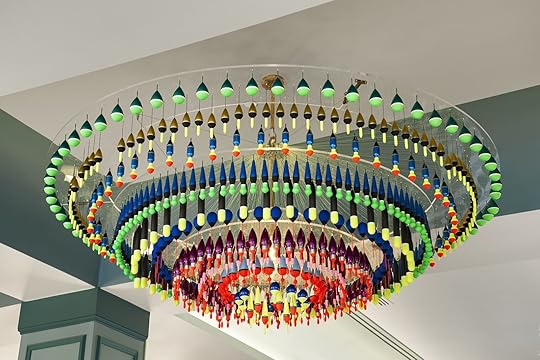
Photo: Nick McGinn

Photo: Nick McGinn

Photo: Nick McGinn
It’s not just the lobby that will have your brain buzzing with interior decor ideas. The on-site restaurant, mysteriously named Complicated Pilgrim, is a little more subdued, but it’s certainly not tame. Here, the dominant color is green and the fun artworks are plentiful, including a display of hanging plates that look nothing like the one at your grandma’s house.
Besides the great decor, Complicated Pilgrim is a lovely place to have breakfast, lunch, or dinner for a reasonable price. During my stay, I opted to have breakfast there because none of the restaurants on Overton Square open before 11 AM on Sundays. I was particularly impressed by the service at Complicated Pilgrim. The young people behind the counter were not only speedy and attentive, but they gave me some tourist tips I badly needed as a first-timer to Memphis. Order the freshly squeezed blood orange juice — it’ll wake you up almost as instantly as a cup of the delicious coffee.
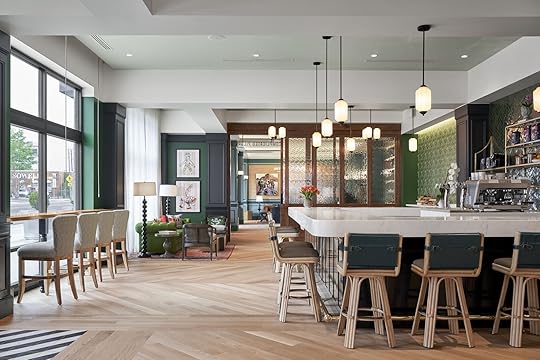
Photo: Nick McGinn
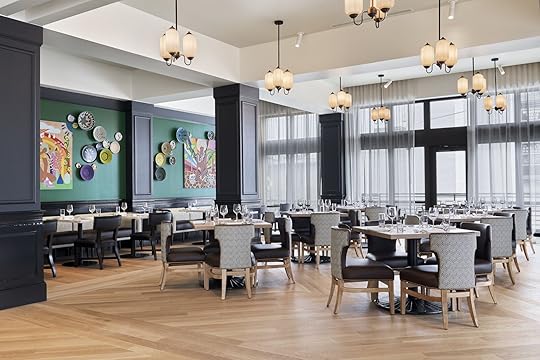
Photo: Nick McGinn
For late night bites and drinks at The Memphian, make your way up to the rooftop, where the bar Tiger and Peacock envelops you in bold colors, patterned wallpapers, neons, and art like a faux giraffe’s head holding a chandelier in its mouth. The view of the neighborhood, which you can easily enjoy from inside through the large windows or from the terrace, is lovely, but barely noticeable amid the pure joy of the whimsical decor.

Photo: Nick McGinn

Photo: Nick McGinn

Photo: Nick McGinn
I booked a Standard Room ($224 per night) and, while stylish, the interior design of the rooms are a lot more low-key with soothing colors and simple art on the walls. A safe choice for a space dedicated to sleeping. The layout, however, is a little unusual: As you enter the room, you walk straight into an open-concept bathroom.

Photo: Nick McGinn

Photo: Nick McGinn
Beyond the beauty of The Memphian, it’s the location that may be a deal-maker or a deal-breaker, depending on what type of traveler you are. Right on Overton Square, The Memphian is part of the regeneration of this Midtown neighborhood. There’s plenty to see and do around here with five theaters and plenty of clothing boutiques, spas, restaurants, bars, and street art. You can spend your entire weekend in the area and not run out of places to visit. But if you’re a first-time visitor to Memphis and want to enjoy music on Beale Street or visit the National Civil Rights Museum or Sun Studio, you’re going to have to take a 15-minute ride or hop on the bus via Union Avenue for $1.
Book your stay at The Memphian now
The Peabody: The Memphis hotel for traditional style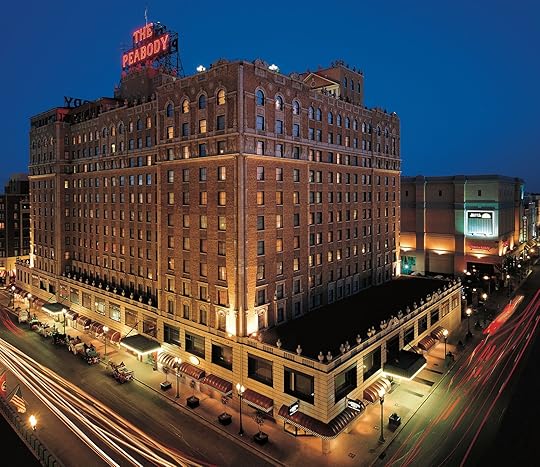
Photo: The Peabody
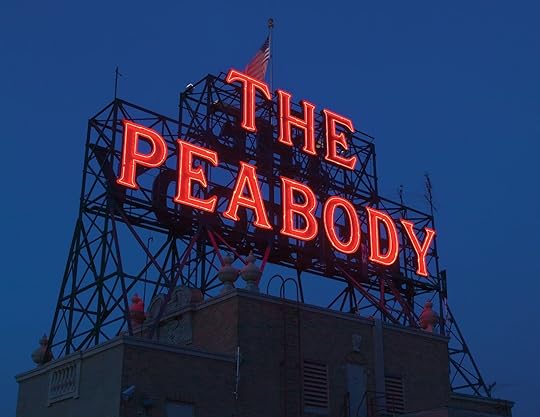
Photo: The Peabody
On the other side of the hotel spectrum from The Memphian is The Peabody. Built in 1925, this Memphis hotel is listed on the US National Register of Historic Places, and according to our taxi driver, “it’s the grandest hotel in the South.” It’s not hard to see why.
The exterior of The Peabody is very similar to that of The Memphian, except that it’s real-deal 1920s. The huge structure is made with red bricks and there are branded maroon awnings around every window and lit-up marquees around the entrances.
In the lobby, the 1920s are replaced with Italian Renaissance Revival-style architecture. It’s over-the-top decor, but in a totally different way than at The Memphian. No bright colors, busy patterns, or neon signs here, but there are soft yellow-light chandeliers and sconces, wooden beams, and hand-painted floral designs on the ceilings. A large fountain topped with a gigantic bouquet of real flowers is right in the center of this immense space. The check-in desk is almost hard to find in this huge lobby where there are also clothing and souvenir shops, three restaurants and cafés, and a bar with seating spread throughout the entire room, including around the fountain and the self-playing piano.

Photo: Trey Clark
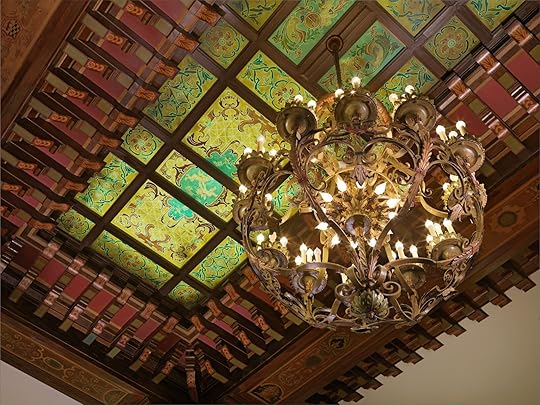
Photo: Trey Clark
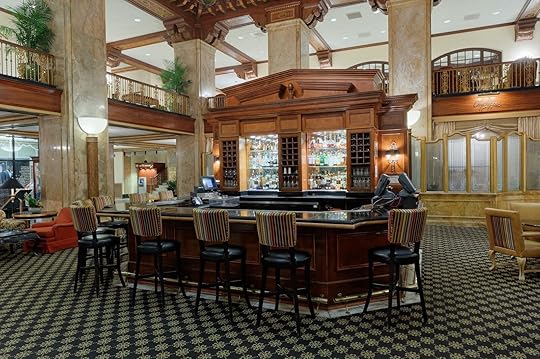
Photo: The Peabody
The Peabody’s most famous feature is its marble fountain and the four ducks that call the fountain home from 11 AM to 5 PM daily. Because they are adorable and well-behaved (we never saw one attempting to escape), they are the subjects of many photos from hotel guests. The event not to miss at The Peabody is the Duck March, which happens at 11 AM and 5 PM daily. The duckmaster, dressed in his fancy red uniform, tells guests gathered around how the ducks were brought to the fountain in the 1930s after the general manager Frank Shutt returned from a hunting trip and put his live duck decoys in the fountain. An animal trainer taught the birds the duck walk in 1940, and the tradition remains to this day in the form of the duckmaster who guides the ducks from the fountain to the nearby elevator via a red carpet. He then gets in the elevator with the birds and takes them to the rooftop where they have a cozy little home called the Duck Palace. The whole show is a must-see, but know that you need to get there 30 minutes before to find a good spot (the mezzanine level provides some decent seating and views of the event).

Duckmaster Kenon Walker. Photo: The Peabody Hotel
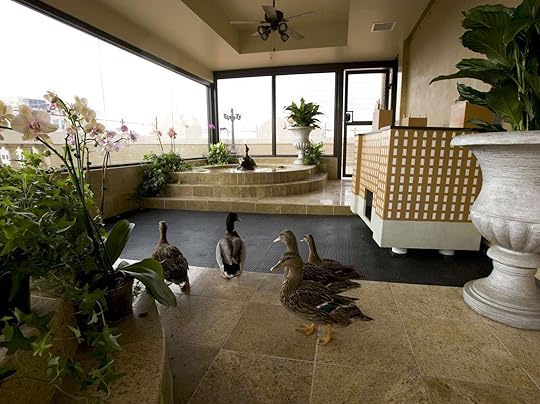
The Duck Palace. Photo: The Peabody Hotel
You can take a closer look at the ducks in their private space on the roof by taking the elevator to the top of the building and walking around the terrace — the Duck Palace is at the far left end. At night, there’s staff (dressed in the hotel’s elegant and classic uniform) working behind a makeshift bar, so you can take in the view of the city and follow the baseball games at nearby AutoZone park with a drink in hand. While up on the roof, make sure to take a selfie with the lit-up “The Peabody” sign — it’s a rite of passage.
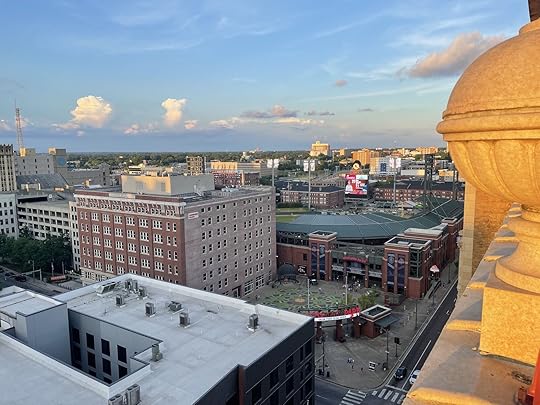
View from the rooftop at The Peabody Hotel. Photo: Jesse Adams

Double Deluxe room. Photo: Jesse Adams
The rooms at The Peabody are simple and comfortable. There’s a hushed blue, gray, and beige color scheme that won’t blow your socks off, but the beds are extremely comfortable and you’ll get a couple of Peabody-specific touches, like water bottles decorated with little ducks and duck-related art on the walls. The bathrooms are run-of-the-mill, functional, and, unlike The Memphian, pleasantly private. While we heard some guests complaining about the lack of elevators (only three for 625 rooms), we never had an issue and used the stairs to walk down from our seventh floor Deluxe Double room (starting at $260 per night).
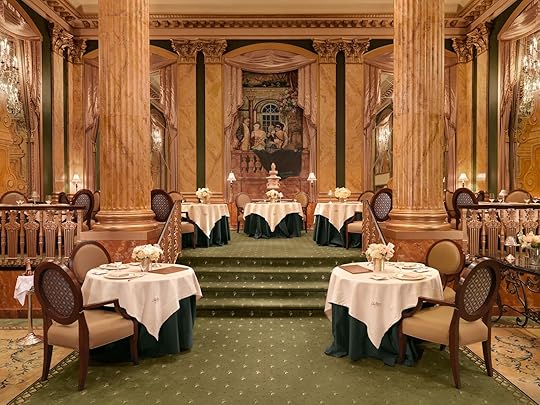
Photo: Trey Clark

Photo: The Peabody
There are three restaurants within The Peabody: Chez Philippe, where you are served afternoon tea in a jaw-dropping decor; the Capriccio Grill for Italian fare; and The Peabody Deli & Desserts, where you can grab a coffee, a sandwich, and a cute duck-shaped pastry. Note that none have duck on the menu for obvious reasons, and all are on the pricey side.
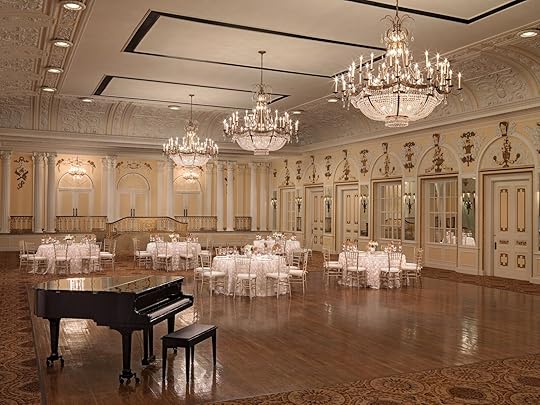
The ballroom is one of the secret rooms you’ll see on a tour of The Peabody. Photo: The Peabody
To get a well-rounded lecture on this Memphis institution, take a $10 two-hour tour led by the Duckmaster that happens daily at 11 AM. It’s very worth the small fee to see rooms you would not otherwise have access to, get the whole history of the hotel, and learn about the famous people who visited it over the years. You can purchase your ticket at reception. 
Book your stay at The Peabody now
More like thisLux Travel7 Reasons You Need To Stay at This Giant, Extravagant Pyramid Hotel in MemphisThe 7 Best Portland Gardens To Get Your PNW Flower Fix
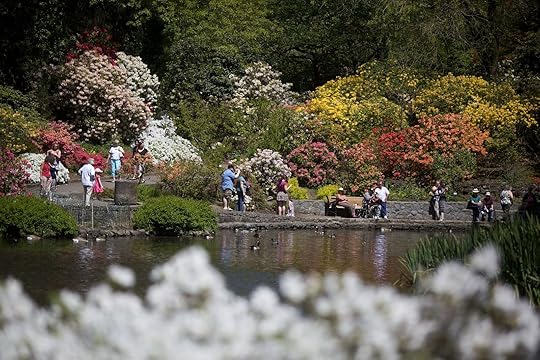
One of the best things about Portland, Oregon is that it’s a nature-centric city. Portlanders have a strong affinity for greenspace, and it shows. Portland’s extraordinary gardens and parks offer fantastic displays of the weird, wild, and “wow” of nature and are a testament to greenthumbery at its best.
What’s even more interesting about Portland gardens is that they display far more than just the flora of the Pacific Northwest. Within the best Portland gardens, you’ll find plants and trees from as far as Japan, Europe, and southeast Asia.
These are the best gardens and parks to visit in Portland.
International Rose Test Gardens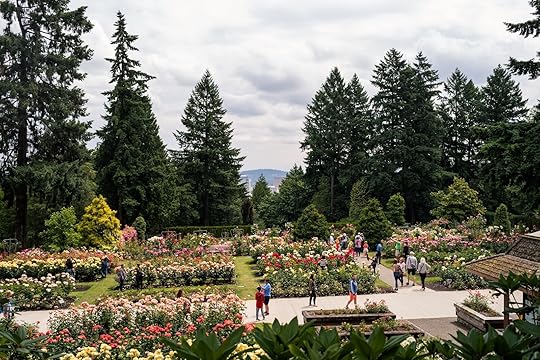
Photo: Travel Portland/Justin Katigbak
Stop and smell all the roses at the International Rose Test Gardens in Washington Park, which serves as a testing ground for new rose varieties. It’s perhaps the most well known of the various Portland gardens. It would be quite an endeavor to try to smell all of the 10,000 individual rose bushes from 610 different species, but you could certainly try.
The majority of the roses are commercially available and 10 to 20 of the varieties are replaced each year with the newest, hottest roses released onto the market. You can buy plants at the garden, but otherwise, it’s totally free to visit. There’s even a free shuttle that runs through Washington Park and stops at the rose garden gate. There’s also a parking lot near the rose garden with a $2 parking fee.
Portland Japanese Garden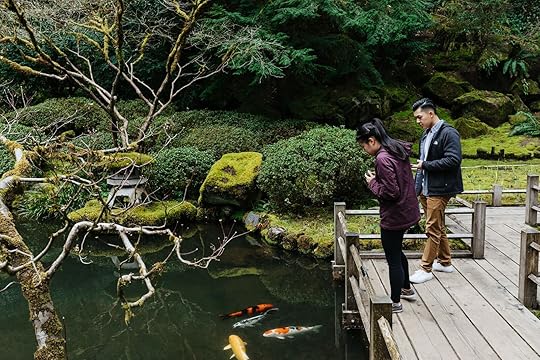
Photo: Travel Portland/David Alvarado
The Portland Japanese Garden has been open to the public since 1963. It’s designed in the same style as traditional gardens in Japan, where the focus is on creating a physical and mental break from the outside world, giving visitors to this Portland garden a chance to focus on tranquility and natural beauty.
It’s part of Washington Park and has five unique gardens, including the “Strolling Pond Garden” with idyllic bridges and the “Sand and Stone Garden,” where raked sand and moss-covered stones invite guests to ponder the beauty and potential of blank space.
Some of the footpaths are intentionally built to slow visitors down and help them embrace a leisurely pace. Visitors can usually see Mount Hood on clear days and there’s an on-site Japanese Tea House to break for matcha and handmade confections or buy Tokyo-made tea sets.
Tickets are $19.95 for adults and include admission to the gardens, a guided tour, and entry to the galleries and various exhibitions. Hours vary throughout the year, but they’re always closed on Tuesdays.
Forest Park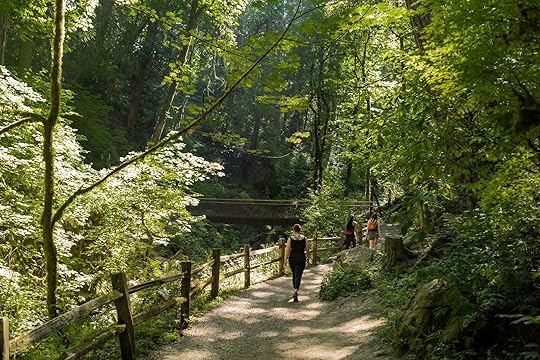
Photo: Travel Portland/Justin Katigbak
Lucky Portland locals have one of the largest urban forests in the United States in their backyard. Boasting 5,200 acres with 70 miles of trails, fire lanes, and forest roads, Forest Park is the quintessential Pacific Northwest green space. The Portland garden park is popular with nature lovers who want to wander in surrounds native to the PNW.
The park is thick with Douglas fir, grand fir, Oregon white oak, pacific madrone, and bigleaf maple trees, and smells like a woody oakmoss candle in real life. It’s beloved by bird-watchers who visit in the morning to spot more than 100 species of native birds (the park abuts the Audubon Society of Portland Sanctuary) while hikers, cyclists, and equestrians laud its designated trails.
Admission is free and the park is open roughly from 5 AM to 10 PM
Tanner Springs Park
Photo: Travel Portland/Justin Katigbak
Portland has many unique districts, one of which is the aptly named Pearl District. The warehouse- and factory-heavy neighborhood developed in the mid-to-late 1800s, but it wasn’t until the 1980s that it earned its moniker. While the buildings may be unattractive on the outside, they now house artists and hip bars, beautiful galleries, cool breweries, and trendy restaurants — much like how a pearl is beautiful on the inside. A
Tanner Springs Park is the gem of the Pearl District (pun slightly intended). The one of the most sustainably designed Portland gardens, centered around a waterscape and opened in 2003. The park protects examples of the freshwater ponds, emergent wetlands, wet prairies, and oak woodlands found in the Willamette Valley, and is a natural space rather than a manicured and maintained garden.
Notable features include an art wall running along the eastern edge of the park. It’s made with repurposed railroad tracks and glass sculptures of local native insects and amphibians. The park isn’t huge, but it’s a lovely place for a stroll and a chance to see sustainable, natural design in a public space.
Hoyt Arboretum
Photo: Wasim Muklashy/Shutterstock
You don’t have to be a treehugger to enjoy Portland’s living museum of trees, though a few hours here might turn you into a fully-fledged dendrophile. The Hoyt Arboretum is part of Washington Park and has 2,300 tree and plant species from six continents entirely maintained by volunteers.
It’s one of the best Portland gardens for stretching your legs, with 12 miles of trails through the magnolia collection, maple collection, and a bamboo forest. Don’t miss the Redwood Trail, which has three species of redwoods planted in the 1930s and ‘50s: the coast redwood, the giant sequoia, and the dawn redwood -– just try to resist the urge to hug those trunks.
This is a free garden, and the public are invited to attend events throughout the year, from lectures and guided forest bathing to tai chi and educational herb walks.
Mills Ends Park
Photo: Portland Parks and Rec
What Mills End Park lacks in size it more than makes up for in character.
The world’s smallest park, according to the Guinness Book of Records, is a tiny urban park in a street median between Pacific Highway and Naito Parkway in downtown Portland. It’s a scant 452 square inches and consists of one tree and sometimes flowers.
In true “Keep Portland Weird” style, the park was developed by a journalist named Dick Fagan in 1946, who planted flowers in the empty space following a street pole removal. He wrote a column about fictitious park happenings in his self-proclaimed park — most about a group of leprechauns, who Fagan claimed had established “the only leprechaun colony west of Ireland” in the park. The park was dedicated in 1948 and became an official city park (and garden, when the flowers are there) in 1976.
Visiting the park is free, though as you might expect, only about two people can visit at one time.
Crystal Springs Rhododendron Garden
Photo: Travel Portland
A pleasant meander around the nine-acre botanical garden reveals more than 2,500 rare species of rhododendrons, azaleas, unusual plants, and lesser-known shrubs. This is one of the most beautiful Portland gardens, with gentle walking paths, waterfalls, a large water fountain, and a whimsical wooden footbridge.
It was originally the home of Portland Mayor William S. Ladd in the 1880s, but became a test garden in 1950 and the Crystal Springs Rhododendron Garden in 1964. In some sort of impressive botanical flex, the oldest rhododendron that’s still alive today was planted prior to 1917. The garden is also quite popular with birders as Crystal Springs Lake attracts a wide variety of waterfowl.
Admission to the park is a reasonable $5, though it’s free every Monday. 
Aurora, Forest, Coast: A Travel Guide To the Natural Wonders of Michigan
 Aurora, Forest, Coast: A Travel Guide to the Natural Wonders of MichiganText by Nicole Rupersburg | Photo by John McCormick/Shutterstock
Aurora, Forest, Coast: A Travel Guide to the Natural Wonders of MichiganText by Nicole Rupersburg | Photo by John McCormick/ShutterstockRunning along soft sandy beaches surrounded by towering dunes. Taking in the swirls of the Northern Lights. Feeling the powerful spray of a rushing waterfall. Cresting forested ridges as spectacular views open before you. These are experiences any outdoor adventure lover would welcome — and Michigan offers all of them and more. The Great Lakes State steals the spotlight as a premier adventure destination for those hungry for the rush of exploration.
It doesn’t matter if your preferred mode of adventuring is kayaking, surfing, hiking, biking, skiing, ice climbing, or something else entirely. Choose only one, or try them all if you want — because you can. Nicknamed “America’s Third Coast,” Michigan is home to the longest freshwater coastline in the nation, thanks to its borders along four Great Lakes. To balance all that blue is an immense amount of green — forested land covers more than half the state, including three protected national forests. You’ll also find more miles of rail trails here (2,623, to be exact) than in any other state, with entire networks of railroad track converted into multi-use trails.
We’ve put together a comprehensive guide to exploring each distinct and distinctly exciting region of Michigan, from the outskirts of Detroit all the way up to the Upper Peninsula. Get ready for a newfound appreciation of Mother Nature in all her forms.

This post is proudly produced in partnership with Pure Michigan.
Northern Michigan Sleeping Bear Dunes National Lakeshore Sunset over Lake Michigan Arch Rock at Mackinac Island If you’re looking for the most Michigan-iest bang for your buck, it might just be here in Northern Michigan. This is where you’ll find some of the state’s most famous natural wonders and historic treasures, including several spots considered among the most beautiful in America.Out on the lake
With its aquamarine waters, Torch Lake — running north to south just east of Grand Traverse Bay — conjures visions of the Caribbean. It also happens to be Michigan’s largest lake by volume and is home to legendary sandbars perfect for catching one of the most stunning sunsets you may ever witness.
Sleeping Bear Dunes National Lakeshore, meanwhile, won “The Most Beautiful Place in America” on ABC’s Good Morning America, and the moment you see the brilliant sapphire waters of Lake Michigan from the top of a 460-foot sand dune, you’ll understand why. Explore the 20-mile Sleeping Bear Heritage Trail and test your endurance on the steep 3.5-mile Dune Climb.
The powerful waves of Lake Michigan can be reminiscent of the mighty ocean — and yes, you can ride them just the same. Surfing and bodyboarding on Lake Michigan are growing in popularity as more surfers discover these shreddable freshwater waves. Check out Sleeping Bear Surf & Kayak for lessons so you can graduate from kook status.
Inland adventuresNorth of Harbor Springs, State Highway M-119 narrows and winds for a 20-mile stretch that’s known as the Tunnel of Trees. The surrounding forest floor is carpeted with wildflowers in the spring; the trees blaze with color in the fall. But really, it’s spectacular any time of year thanks to the fairytale-like canopy that domes over the area.
As the sun sets, stargazers should make their way to Headlands International Dark Sky Park, one of three internationally designated dark sky preserves in the state. You can plan your visit for whenever suits you — the park is open 24/7, 365 days a year.
Island hoppingAlso part of Sleeping Bear Dunes National Lakeshore, though located several miles offshore, the Manitou Islands are accessible by ferry from the mainland. There are thousands of acres of wilderness to explore here, including the “Valley of the Giants,” a stand of old-growth white cedars more than 500 years old.
Mackinac Island, located on Lake Huron between Michigan’s Upper and Lower Peninsulas, is aptly named the “Jewel of the Great Lakes.” It almost feels frozen in time, in a good way: impeccably kept 19th-century Victorian architecture and no cars in sight (as in, they’re not allowed). Your best options for getting around are by bike, foot, or buggy. Fill up on decadent fudge — a staple in Mackinac — then explore the dramatic limestone bluffs of Mackinac Island State Park, which covers most of the nearly four-square-mile island.
Photo credits: Bo Shen/Shutterstock, Becky Swora/Shutterstock, M4Productions/Shutterstock, Craig Sterken/Shutterstock, Ricardo Reitmeyer/Shutterstock, and John McCormick/Shutterstock.Western Michigan Kite surfer at Grand Haven Silver Lake Sand Dunes Lighthouse at Silver Lake Charming beach towns dot the coast of Western Michigan, but don’t let the serenity fool you. Those seeking faster-paced adventure will find loads of opportunities for hikers and bikers here as well. Call it the best of both worlds.Sand dunes
Saugatuck Dunes State Park is home to pristine shoreline, trails, and coastal dunes up to 200 feet tall. For a leisurely way to explore the park, book a 40-minute tour with Saugatuck Dune Rides.
But if you’re ready to get your heart pumping, know that Silver Lake Sand Dunes at Silver Lake State Park welcomes off-road vehicles. In fact, these are the only dunes east of the Mississippi open to ORVs, and people come from all over to have fun riding around the 2,000-acre sand dune playground.
Beaches and RiversWhen in Western Michigan, you get your pick of beautiful beaches to enjoy. Families will love Silver Lake State Park’s big, swimmable beach along the Lake Michigan shoreline. The park also has its own inland lake — Silver Lake, naturally — with warmer, calmer waters perfect for swimming or kayaking. Then there’s Grand Haven State Park, arguably the most majestic of all Michigan’s beaches. Its scenic pier features two lighthouses and waves that can crash into them so dramatically it’s like they’re posing for your next Instagram post.
Leisure paddlers may find a new favorite kayaking destination in New Buffalo, where the Galien River Marsh Water Trail offers six miles of slow-moving, scenic waters. Rent kayaks for the Galien River, Silver Beach, Warren Dunes, and more through Third Coast Paddling.
HikingFor those who enjoy hiking and backpacking, make sure to check out the North Country National Scenic Trail, headquartered in Lowell. This 4,800-mile route runs through seven other states and stands as the longest national scenic trail in the United States. Michigan is the lucky state to be home to the most trail miles. Take your time here as you wander along crystal clear streams, prairies, valleys, and more.
If you find yourself still longing for the outdoors come nightfall, get yourself to Dr. T.K. Lawless Park, located to the southwest of Kalamazoo. This is another of the state’s International Dark Sky Parks, where nature puts on quite a glow-in-the-dark show.
Photo credits: Sam Negen9/Shutterstock, Dean Pennala/Shutterstock, Aaron Steinhilb/Shutterstock, kojihirano/Shutterstock, MJAYW/Shutterstock, and North Country Trail Association (NCTA). The Upper Peninsula Pictured Rocks National Lakeshore Northern Lights from Point Betsie Porcupine Mountains State Park Michigan’s Upper Peninsula is massive, comprising over a quarter of the state’s land area. It’s also sparsely populated, rugged, and remote. While over here, you will end up losing phone service most of the time, giving you true respite from technology and the city. There are also plenty of wild animals to be aware and respectful of, including moose, black bears, wolves, and coyotes. Needless to say, the UP’s outdoor adventure options are unmatched.On the shorePictured Rocks National Lakeshore, along Lake Superior, holds 15 miles’ worth of dramatic, rainbow-hued sandstone cliffs rising upwards of 200 feet from the water. For the best view of the cliffs, explore via kayak rentals and guided tours. You can also book a boat cruise from mid-May to mid-October.
When you’re ready, return to land and wander the lakeshore’s many trails that lead to remote streams, waterfalls, and hidden beaches. For those who like to feel the magic of long walks on the sand, Twelvemile Beach might just be your jam.
The Northern LightsAlthough they can happen any time of year, the Northern Lights shine brightest during the longer fall and winter nights — no traveling to Norway required. The south shore of Lake Superior, with its high latitude and pitch-black skies, provides optimal viewing of the aurora borealis from August through April. There are no designated dark sky preserves or international dark sky parks in the U.P., but there don’t need to be: once you cross the Mackinac Bridge, the light pollution all but disappears. The entire peninsula is basically a dark sky preserve.
During these chillier months, just outside of Marquette, the Eben Ice Caves form when melting snow freezes as it runs over a small cliffside. These are the most accessible of the U.P.’s ice caves, reachable via a brief hike. Don’t forget your ice cleats!
HikingPorcupine Mountains Wilderness State Park on the northwestern edge of the UP, is Michigan’s largest state park. Explore the small group of mountains known as “the Porkies,” home to forests, waterfalls, rivers, and more than 90 miles of hiking trails. This is the place for backcountry camping.
The Upper Peninsula is rich in waterfalls, with more than 300 of them ranging in vertical drop from five to 48 feet. Tahquamenon Falls in the northeast is the biggest showstopper. Its dramatic Upper Falls plummets nearly 50 feet and spans 200 feet across, making it one of the largest east of the Mississippi. You’ll find the Lower Falls four miles downstream, where five smaller falls surround an island that can be reached by rowboat (rentals are available at park concessions).
For truly remote backcountry, put Isle Royale National Park on your list. One of the least-visited national parks, it consists of one main island surrounded by 400 smaller ones and overflows with undeveloped wilderness. Accessible by ferry (which takes a little over three hours) from Copper Harbor or seaplane (about an hour) from Hancock, getting to Isle Royale is neither quick nor easy, and its remoteness isn’t for everyone. Bring your tent and your kayak — the best, and really only, way to explore the hundreds of surrounding islands — and plot your escape from the rest of the world.
Photo credits: Lattasit Laohasiriwong/Shutterstock, John McCormick/Shutterstock, John McCormick/Shutterstock, Dean Pennala/Shutterstock, Jeff Caverly/Shutterstock, and RonaldL/Shutterstock.Eastern Michigan Turnip Rock Lake Huron sunrise Tawas Point Lighthouse Eastern Michigan has the benefit of playing host to lesser-visited but equally beautiful natural areas, combined with the fact that many of them are an easy day trip from major urban centers. If your travel style typically features a night out on the town after a day spent in the great outdoors, head here.Out on the lakes
Lake Huron is massive, with the longest shoreline of any of the Great Lakes and more than 30,000 islands dotting its waters. No wonder, then, there’s a lot to explore: sandy beaches and dunes, rugged limestone, coastal wetlands, dense forests, diverse river systems, and nearly 1,000 shipwrecks, some of which are visible from the water’s surface. The wreck of the Dorcas Pendell, for example, is an easy 20-minute paddle from Harbor Beach.
Eastern Michigan can turn anyone into a kayaking enthusiast with the 7-mile, out-and-back trip to Turnip Rock in Port Austin. The rock formation seems to defy the very laws of gravity. Don’t forget to check out the sea caves and Thumbnail Point, another rock that juts out into the water, too.
Afterwards, take a break and head to the idyllic Palmer Park to pick a viewing spot along the world’s longest freshwater boardwalk.
DivingLake Huron has become a serious destination for divers in recent years. Go beneath the surface and explore the Sanilac Shores Underwater Preserve, the final resting place of at least 16 shipwrecks. Lake Huron is also home to the country’s largest freshwater sanctuary, known as Thunder Bay National Marine Sanctuary. With 200 shipwrecks preserved, divers and snorkelers of all levels can find a site to explore. (There are also glass-bottom boat tours if you prefer to stay above water.) About two miles off the shore near Lexington is an ancient underwater petrified forest in 40 feet of water — its trees have been carbon-dated to nearly 7,000 years old.
BirdwatchingTawas Point State Park has been called the “Cape Cod of the Midwest” and serves as a stopover point for hundreds of seasonal migrating birds, including bald eagles, making it a popular spot for birdwatching. A historical site of significance here is the Tawas Point Lighthouse, the only true Victorian era-style station on the Great Lakes. From the park you can also access the 16.2 miles of the Tawas Bay Multi-Use Trails, part of Michigan’s Iron Belle Trail.
Photo credits: Craig Sterken/Shutterstock, John McCormick/Shutterstock, Doug Lemke/Shutterstock, Dalton Arwady/Shutterstock, ABPhotog/Shutterstock, and Jeff Caverly/Shutterstock.Michigan is exploding with breathtaking natural wonders and pulse-pounding outdoor adventures all year round. You can take your pick of as many as you want — the only real issue is, will you have enough time to do it all?

This post is proudly produced in partnership with Pure Michigan.
5 States With the Most Scenic and Laid-Back Nude Beaches

Nude beaches aren’t for everyone, but what better way to say “life is back in session” than by flinging off your clothes and seeing way more of people than you ever wanted to? Nude beaches aren’t just for Europeans, folks. They’re scattered all over the US, and if you know where to look you might just find your new favorite summer hangout. I’m not saying you’ll be making a clothes bonfire and moving to a nudist colony in the woods anytime soon, but I’m not saying you won’t, either. From Oregon to Massachusetts, these are the states with the best nude beaches in the US.
Nude beaches in TexasNude beaches in HawaiiOregon nude beachesNudist beaches in CaliforniaNude beaches in MassachusettsNude beaches in TexasTexas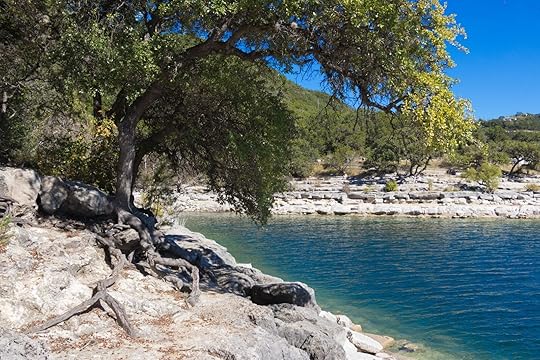
Photo: Philip Arno Photography/Shutterstock
UFO Beach, South Padre IslandDon’t get your hopes up. The only alien lifeforms you’ll see on UFO beach are the wrinkled, leather-tan sunbathers sprawled out on the sand catching rays. The beach takes its name from an alien-looking “escape pod” that washed ashore, though it was later determined to be nothing more than an ocean buoy. At eight miles from the nearest town and accessible via a remote dirt road, you’ll have plenty of privacy here to let it all hang out.
Hippie Hollow, AustinThis county park is located on the shores of Lake Travis, 18 miles from Austin. Nude use was legalized by the county in the early 1980s, and it’s the only Texas state park that’s clothing-optional. The area is popular not just for its free-spirited clothing-optional ethos, but also for its blue-green waters and picturesque tree-covered hills. Since summer temperatures can easily exceed 100 degrees, you’ll probably want to go nude even if you’re hesitant.
McFaddin Beach, Bolivar PeninsulaWhen a hurricane destroyed much of State Highway 87 near Port Arthur in 1989, but McFaddin Beach was left isolated enough to make it popular among nude beachgoers. The nude area of the beach begins three miles east of the junction of highways 124 and 97, and you can park directly on the beach. Parking on the beach sounds cool, but your car should have four-wheel drive if you don’t want to get stuck.
Nude beaches in Hawaii
Photo: Pierre Leclerc/Shutterstock
Little Beach, MauiOne of Hawaii’s most popular nude beaches, Little Beach is found in Makena State Park. About 10 miles south of Kihei on Maui’s west coast, the crescent-shaped beach is just a few hundred feet long. You can get there via a short walk over a rocky outcropping from the larger Big Beach (which is not nude). It’s worth noting that no beaches in Hawaii officially allow nudity, though the ones listed here are known as safe havens for nude sunbathers.
Kehena Black Sand Beach, Big IslandJust east of Hawaii Volcanoes National Park on the Big Island, this beach is known — apart from the nudity — by its black sand created by a volcanic eruption in the 1950s. The clothing-optional beach is a great place for whale watching, seeing dolphins and sea turtles, and going snorkeling.
Polo Beach, OahuWhen it comes to beaches in Oahu, you’re spoilt for choice. But you’ll be wanting to head to Polo Beach, named for the nearby polo field, if you’d like to avoid tan lines. Once you arrive, walk a few minutes either left or right to reach the nudist portion of the beach.
Oregon nude beaches
Photo: TLPhotoPDX/Shutterstock
Rooster State Park, CorbettTwenty-three miles east of Portland you’ll find Rooster State Park, one of the most well-known nude beaches in the US. Located along the Columbia River, Rooster State Park’s nude area begins a few hundred feet east of the parking lot, and it has stunning views of the river gorge and green hills surrounding it. It’s especially popular with gay sunbathers. Nudity is also common on the walking trails behind the beach, and there’s a volleyball area in the forest for those looking to dabble in nude volleyball.
Collins Beach, PortlandAnother of the Pacific Northwest’s best-known nude beaches, Collins Beach near Portland is also on the Columbia River. The beach is located on Sauvie island, a river island created by three waterways. It’s known for its social atmosphere and hot temperatures — since, unlike Rooster State Park, Collins doesn’t benefit from the cool wind blowing through the gorge. As an extremely popular beach, it’s almost always crowded during the summer, so you may want to sunbathe elsewhere if privacy is important to you.
Bagby Hot Springs, Mount Hood National ForestSo this one isn’t technically a beach, but it’s one of Oregon’s most remote and intriguing nude recreation areas. Bagby Hot Springs provides water to a bathhouse located deep in Mount Hood National Forest, and nudity is well established here. The bathhouse is composed of private rooms with a soaking tub in each, and a communal area with several tubs. The communal area can hold six bathers at once, so you’d better know your friends extremely well or be open to making new friends. When planning your trip, keep in mind that the remote site is 40 miles away from the nearest services in Estacada.
Nudist beaches in California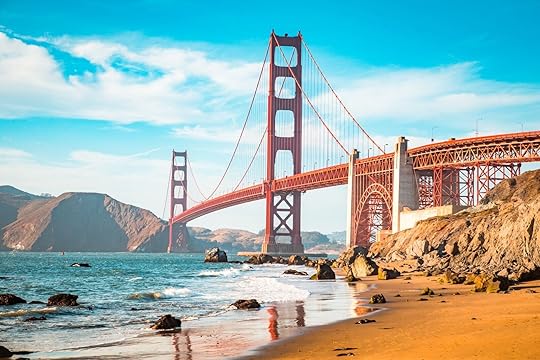
Photo: canadastock/Shutterstock
San Gregorio, Half Moon BayClaiming to be California’s oldest nude beach, San Gregorio is private property that has operated as a nude beach since 1967. Since the beach is quite large, there’s plenty of space for everyone and it rarely feels overcrowded. There’s a small per car parking fee, and cameras are prohibited on the beach.
Baker Beach, San FranciscoBaker Beach is known mostly for its unparalleled views of the Golden Gate Bridge. Thanks to its stunning views, this is one of the most popular beaches in the Bay Area, and it regularly attracts hundreds of visitors. Only the north end of the beach is nude, however, so disrobe accordingly.
Black’s Beach, San DiegoAlthough not technically a legal nude beach, Black’s Beach is so commonly frequented by nude bathers that nudity has become synonymous with the place. The beach’s nude bathing custom dates back to the 1960s, and the city sanctioned part of the beach as clothing optional in the early 1970s. Though the laws changed, Black’s Beach has been known for nude bathing ever since. To reach Black’s Beach, you’ll have to descend one of two trails from a clifftop parking area, winding 300 feet down the cliffs. The south trail, called the Burro Trail, is easier with more paved sections and handrails, while the north trail is steeper and more challenging.
Nude beaches in Massachusetts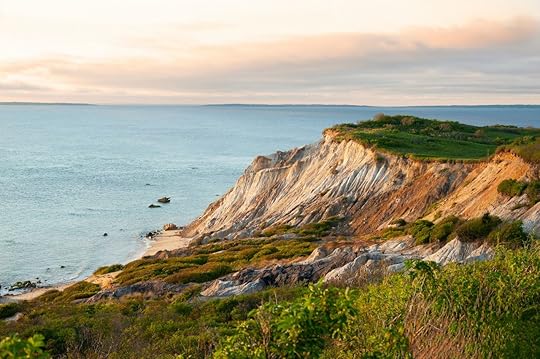
Photo: Allan Wood Photography/Shutterstock
Moshup BeachA Martha’s Vineyard beach vacation conjures images of frat guys in Sperrys playing spikeball in the backyard of a beach cottage one of their parents owns. But you don’t have to wear preppy clothes to have a memorable Martha’s Vineyard beach day. In fact, you don’t have to wear clothes at all. Moshup Beach on the island’s west end is among the most famous nude beaches in Massachusetts. Backed by multicolored cliffs that look out of place on the New England coast, the beach is a popular destination for nude and none-nude bathers alike. Nude beachgoers typically gather about a third of a mile north of the beach’s entry path, just below the Gay Head lighthouse. You might come across a “No Nudity” sign or two — a remnant from the nearby town of Aquinnah’s failed attempt to outlaw nudity — but you’ll find the rule unenforced.
Longnook BeachLongnook Beach is located near the town of Truro on Cape Cod. The nude beachgoers here mostly consist of couples and families, and with white sand and dunes as high as 75 feet, there’s more scenery here than just the nude bathers surrounding you. The beach is part of the Cape Cod National Seashore, where nudity is technically banned, though like most nude beaches in the US the park rangers largely leave nude sunbathers alone.
Herring CoveLocated in Provincetown, one of the most famous LGBTQ destinations in the US, Herring Cove Beach is unsurprisingly popular with the gay community. Nudity is particularly common toward the beach’s southern end, just over a mile south of the NPS beach parking lot. It’s frequented mostly by gay men, though there’s also a lesbian section slightly farther north. The nude portion of the beach is located on a thin strip of land between Cape Cod Bay and a tidal lake, and the warm lake water is perfect for swimming. 
August 1, 2022
Heathrow Airport CEO Blames Terrible TikTok ‘Hack’ for Passenger Assistance Problem

The situation at London’s Heathrow airport has gotten so bad that airlines were recently asked to stop flights through the busy hub. Bags have gone missing, connections have been missed, and people who need assistance getting to the gate have been left to wait for extremely long hours. When it comes to the latter issue, Heathrow CEO John Holland-Kaye says that a TikTok “hack” is partly to blame.
On LBC radio, Holland-Kaye said that 20 wheelchair passengers were forced to wait for someone to take them through immigration in a room with “no air conditioning; these people sitting there knowing it was an absolute disgrace.” This is despite the fact that there are the same number of wheelchair assistance personnel today as there were before the pandemic. Holland-Kaye told the radio program that the issue is that people who don’t need assistance are requesting wheelchairs to get out of the extremely long lines, as depicted in a viral TikTok posted in June.
“Why is that happening? Some of this is because people are using the wheelchair support to try to get fast-track through the airport,” Holland-Kaye said, adding, “If you go on TikTok, you’ll see that that is one of the travel hacks that people are recommending. Please don’t do that.”
@wolfjenko Amazing what taking one sock off can achieve#holiday #wheelchair #vip #foryoupage #foryou #prank #funny #fypシ ♬ original sound – WolfJenko
The video in question was posted on June 21 by user @wolfjenko. He explains that he faked hiring his leg to get through security faster on his way back from Ibiza. He gets a wheelchair, is expedited through security, uses the extra time to mix a “cheeky bevy” of sprite and vodka in a paper coffee cup, and then laughs as a gate agent pushes him to his seat. At the end of the video, he puts his shoes back on and walks out the airport doors on the other side.
“Amazing what taking one sock off can achieve,” he wrote in the caption.
Commenters were quick to call him out.
“This really isn’t funny, there are some of us that really actually need this!!!” user Nicola Giles commented.
“Be careful because what goes around comes back around,” Shanaya commented. “Coming from a wheelchair user.”
Some pointed out that things like this are what put people who actually need these services into a tight spot.
“This is why people like me who ‘look healthy’ but are really sick and need a chair get harassed at the airport, please don’t do this,” user sav commented.
Needless to say, no matter how bad the airport is during this chaotic summer travel season, this is one TikTok hack you should not be trying. 
The 6 Best Wineries and Tasting Rooms in Los Angeles
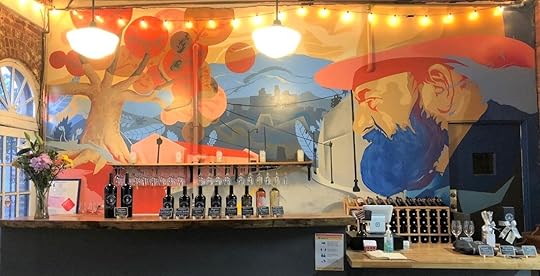
Once upon a time, Los Angeles was known as The City of Vines. There were over 100 wine producers in the area. In the 1850s, Los Angeles was a rural town, and German immigrants led much of the wine making efforts. The wine industry took a big hit in the 1880s when Pierce’s disease (which kills the leaves on the grapevines) struck hard. Following that period, Prohibition, urbanization, and the proliferation of citrus farms marked the end of Los Angeles as the epicenter of California wine. But there are still Los Angeles wineries that are well worth a visit on your next trip.
Today, there’s a new chapter being written on Los Angeles wine production. Los Angeles wineries and tasting rooms are once again thriving in Los Angeles County, although most people probably consider Napa the true heart of California wine.
Along with a small group of winemakers dedicated to reviving interest in crafting wines of high quality from Los Angeles County fruit, other winemakers are opening tasting rooms, but growing or buying their fruit elsewhere. These Los Angeles wineries will surprise and delight you, and offer a urban setting to sip your wine — an interesting change of pace from the usual rural setting where vineyards are usually located. From chic Malibu tasting rooms to the oldest existing winery in Los Angeles, these five tasting rooms provide a selection of what’s available in The City of Vines.
The best Los Angeles wineries to visitSan Antonio Winery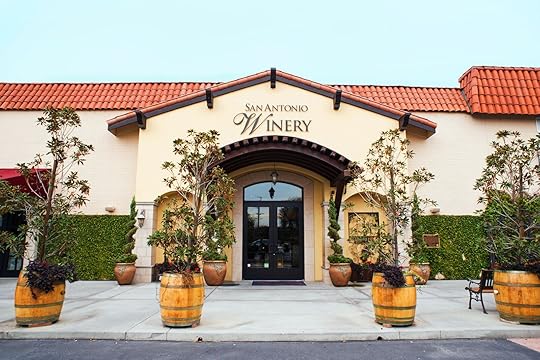
Photo: San Antonio Winery
San Antonio Winery has been located at the original address on Lamar Street since 1917, though the vineyards are long gone. Owned by the Riboli family, the namesake wines produced under the Maddalena label pay tribute to the matriarch of the winery. Maddalena also had the vision to start a restaurant on site (called, appropriately, Maddalena Restaurant) and to purchase vineyards in Napa Valley, Monterey County, and Paso Robles.
San Antonio Winery has a large selection of wines including sparkling wines, white and red wines, and sweet wines. The winery has survived the urbanization of Los Angeles, Pierce’s Disease, and prohibition, by producing wine for the Catholic Church. San Antonio Winery is a look back into Los Angeles’ golden age of winemaking. Don’t miss it.
The winery is open for tastings and tours. Both the winery and the restaurant are open daily.
Where: 737 Lamar St. Los Angeles, Ca 90031
Strange Family Vineyards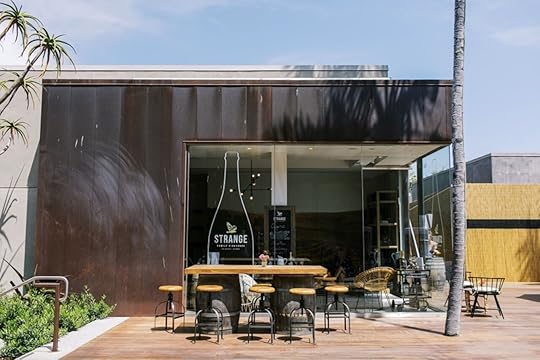
Photo: Strange Family Vineyards
Strange Family Vineyards has a beautiful tasting room located off of Pacific Coast Highway about a mile from the Malibu Pier. There is also seating outdoors and the tasting room is dog friendly. Inside there’s a map of the Santa Rita AVA (American Viticulture Area) where the estate vineyards are located with soil samples should you care to educate yourself on what type of vines grow best in different environments.
Strange Family Vineyards produces Pinot Noir and Chardonnay from organic estate fruit grown in the Santa Rita vineyards. They also make sparkling wine in the methode champenoise, in other words, the traditional process used to make champagne in France. Three different bottles of sparkling wines are produced: a cuvée, blanc de blanc, and blanc de noir. Fruit for the winery’s Syrah is sourced in Santa Barbara County.
Tastings are $32 per person and reservations are recommended especially on weekends. Grab a glass or a bottle and settle into one of the cozy sofas tucked inside the tasting room.
Where: 3939 Cross Creek Rd., Malibu, CA 90265
Cavaletti VineyardsCavaletti Vineyards is one of several winemakers in Ventura County with a passion for bringing back the high-quality wines of the region. The tasting room, located in Moorpark, about an hour from Los Angeles, is a no frills experience that may feature the vineyard owner’s dog and fermenting fruit nearby. Cavatelli farms and sources all fruit from nearby Ventura County, Los Angeles County, and the Santa Ynez Valley.
Cavaletti produces a wide variety of wines from lesser known varieties like Alicante Bouschet, and Nebbiolo, as well as the more well known varieties such as Cabernet Sauvignon. Currently, there are sixteen different bottlings.
Where: 165 Poindexter Ave Suite D, Moorpark, CA 93021

Photo: Angeleno Wine Company
Angeleno Winery, along with Cavaletti, is dedicated to putting Los Angeles back on the map as a wine destination. The winery sources fruit from small, family-owned, Los Angeles county vineyards and strives to make wines that are elegant and balanced, reflecting the character of Los Angeles, a region where the desert meets the sea.
Angeleno Winery specializes in wine varieties that only the most dedicated wine experts will be familiar with, including Graciano, Verdejo, and Tannat, and only in small batches: The winery produces around 2000 cases per year.
The winery is pet friendly and open on weekends only. It also allows outside food so bring your lunch or order something to be delivered after you arrive. Reservations are recommended.
Where: 1646 N Spring St, Los Angeles, CA 90012
Malibu Wines And Beer GardenIf you’re looking for more to drink than just wine, Malibu Wines and Beer Garden might be the place for you. The Mission-style building is almost 100 years old and was built by a silent film star. Weekends are busy with activities like yoga in the garden, local craft sales, and food trucks. You should also know that the current owners have an 1100 acre ranch where they grow all the fruit for the Saddlerock Estate label wines.
It’s worth a visit just to taste wines made from grapes grown in the Malibu AVA. Try the estate sparkling rosé. The other label is Saddlerock––those grapes are from Northern California vineyards. Malibu Wine Hikes is the winery’s sister company, which specializes in excursions that end in gorgeous views with a bottle of wine and many photo ops. The hikes actually take you through the Saddlerock vineyards.
Where: 23130 Sherman Way West Hills, California 91307
Summer Somewhere Wines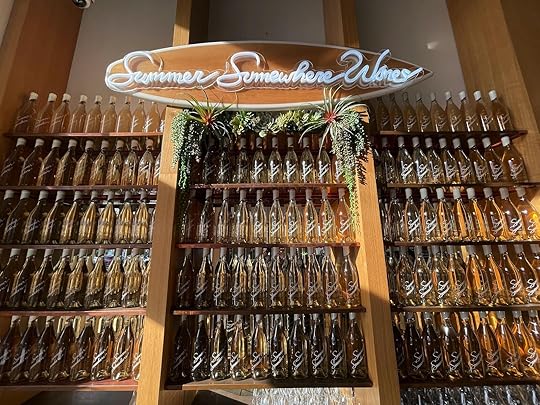
Photo: Summer Somewhere Wine
Summer Somewhere owner Stacy, a designer, and Billy, a winemaker, developed their flagship rosé of Pinot Noir for their wedding, which eventually turned into a thriving wine business. The couple source fruit from vineyards located in Santa Barbara County, an area known for excellent Pinot Noir and Chardonnay.
Summer Somewhere has a tiny tasting room within the swanky Fred Segal boutique in Malibu. They serve wine by the glass or the bottle specializing in rosé wines made in the Provencal style. Though known for their flagship rosé they also produce a Gruner Veltliner, Sauvignon Blanc, three bottlings of Pinot Noir, two red blends, and a luscious ripe Syrah.
Summer Somewhere at Fred Segal is located right across the street from Strange Family Vineyards tasting room so you could easily stop by both on the same trip.
Where: 3822 Cross Creek Rd, Malibu, CA 90265 
11 Must-Book Solvang Airbnbs in California’s ‘Little Denmark’
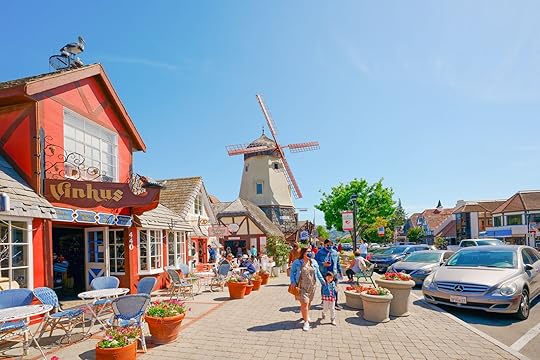
Drive 45 minutes north of Santa Barbara, and you might think you went all the way to Copenhagen. In the early 1900s, a trio of Danish immigrants founded a town called Solvang in the Santa Ynez Valley, and the mini Denmark they envisioned still exists today. The main drag is dotted with windmills and half-timber buildings, past which a horse-drawn trolley called The Honen, or “The Hen” in Danish, regularly shuttles visitors. These same visitors can spend their days visiting the Hans Christian Andersen and Elverhoj Museums before sampling every smørrebrød sandwich and aebleskiver pancake in town. Solvang is also surrounded by vineyards — one thing Central California has on Northern Europe. Whether you love a quirky town or want a memorable base for your next wine-tasting trip, these are the Solvang Airbnbs you need to book.
We hope you love the Airbnb Solvang vacation rentals we recommend! Just so you know, Matador may collect a small commission from the links on this page if you decide to book a stay. Listed prices are accurate as of the time of publication.
1. Papillion Rouge Stone Cottage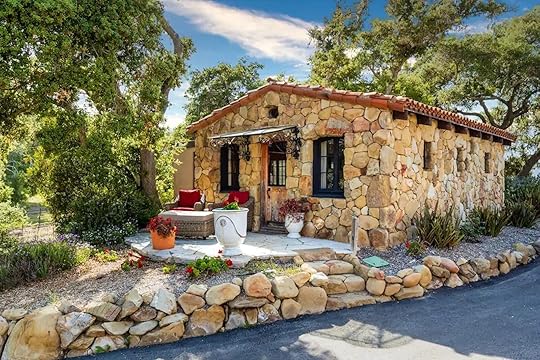
Photo: Airbnb

Photo: Airbnb
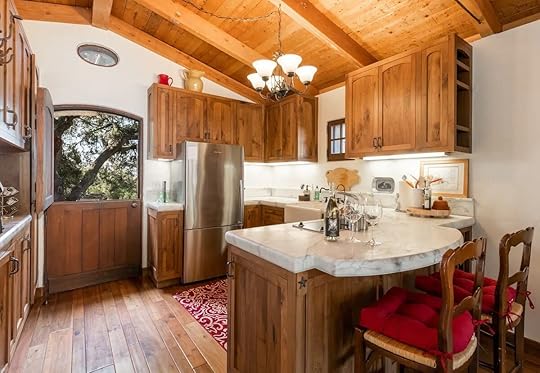
Photo: Airbnb
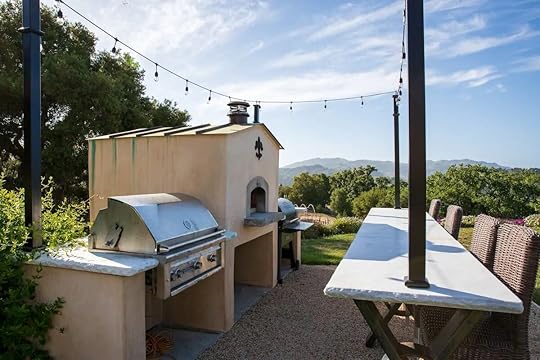
Photo: Airbnb
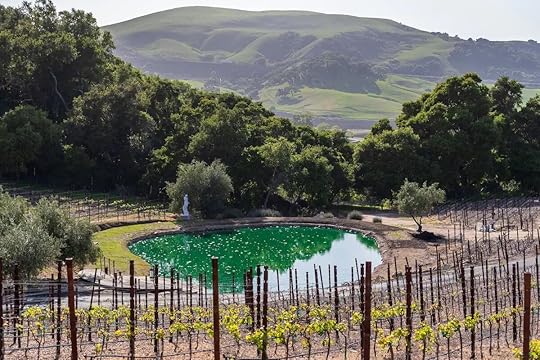
Photo: Airbnb
Solvang may be the “Danish Capital of America” but this real-life cottagecore Pinterest board feels more like it belongs in the South of France — complete with a private vineyard. The generous studio sits on 20 acres, so the only neighbors you’re likely to run into are the deer and wild turkeys that sometimes roam the property, but there’s an organic farm down the road where you can stock up on locally sourced produce. Beyond that, downtown Solvang is just 10 minutes away, and a 15-minute drive will land you in wine country.
Note: The cottage sleeps four, but there’s a $50 per night fee for every additional guest after two adults.
Studio, two guests
Price: $351 per night

Photo: Airbnb

Photo: Airbnb

Photo: Airbnb

Photo: Airbnb
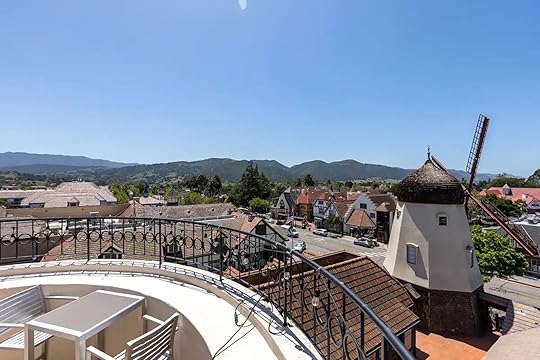
Photo: Airbnb
This two-bedroom apartment in the heart of Solvang was designed to channel hygge, a Danish term describing the feeling of contentment you get from being cozy. The decor nods to Scandinavian design — including a five-panel photograph of Copenhagen’s waterfront to really sell the Euro vibes — but the coolest detail is that the three-story apartment is located inside a replica of the Rundetårn tower in the Danish capital. As you might expect, the panoramas from the rooftop patio are unparalleled, and the downtown location makes this one of the most central Solvang Airbnbs on this list.
Two bedrooms, four guests
Price: $550 per night
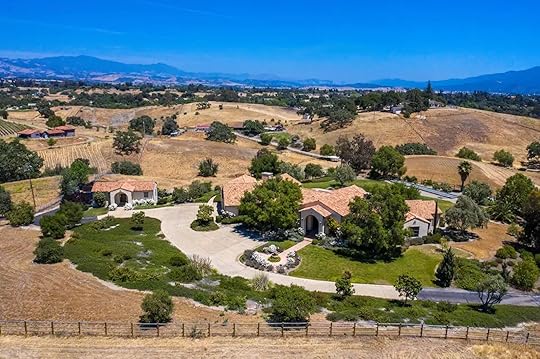
Photo: Airbnb

Photo: Airbnb

Photo: Airbnb

Photo: Airbnb

Photo: Airbnb
Set within the rolling hills of the Santa Ynez Valley, this two-bedroom home is surrounded by five different vineyards. Wine tasting is probably the number one reason to book this Solvang Airbnb, but non-drinkers have plenty to do, as well. There’s great hiking around Lake Cachuma, multiple golf courses and the Chumash casino nearby, and beaches just 20-30 minutes away — although you may prefer to cool off in the on-site pool. Because the two-floor house is split into two apartment-style units, it’s a perfect choice for two couples traveling together.
Two bedrooms, four guests
Price: $377 per night
Traveling to California? Check out Matador’s California accommodations guides:These beautiful San Diego Airbnbs put you close to the beach and downtownThe best 14 Airbnbs near Yosemite National Park11 magical Airbnbs near Redwoods and Sequoia National Parks9 dreamy oceanfront Airbnbs up and down the California coast10 soulful beach Airbnbs for the perfect SoCal yoga retreat12 very zen Joshua Tree Airbnbs perfect for families and groups4. Cottonwood Cottage

Photo: Airbnb

Photo: Airbnb

Photo: Airbnb

Photo: Airbnb

Photo: Airbnb
For a so-called cottage, this one-bedroom rental feels awfully roomy, especially if you take advantage of the private patio out back. It’s technically located in the town of Ballard — close to a historic schoolhouse dating to 1882 and a famous bakery called Bob’s Well Bread — but both Solvang and the Los Olivos wine country are easily reachable by bike. The owner lives on-site in the main house, but past guests have reported feeling perfectly secluded and undisturbed — you even get a separate entrance to feel fully at home.
One bedroom, two guests
Price: $329 per night
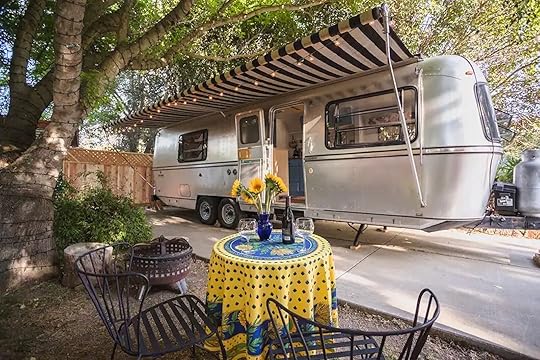
Photo: Airbnb

Photo: Airbnb

Photo: Airbnb
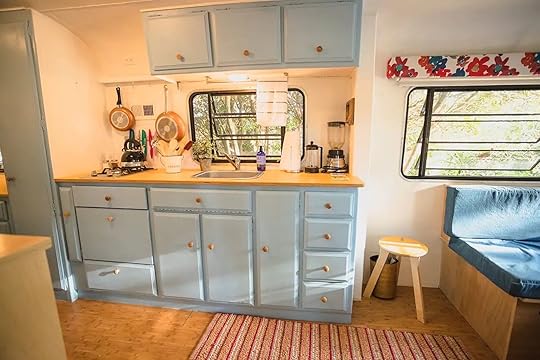
Photo: Airbnb
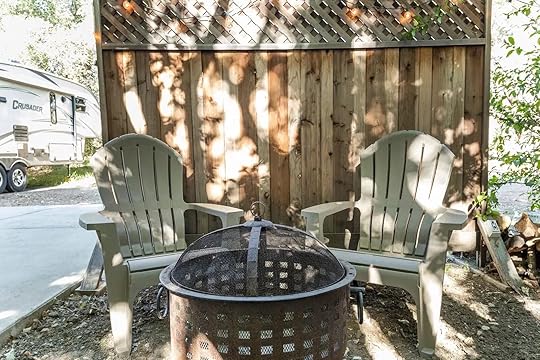
Photo: Airbnb
This adorable vintage Airstream is the perfect alternative to renting a whole ranch if you’re doing wine country on a budget. It has everything you need to be comfortable — including a two-burner stove, an open-air dining area, and a fire pit — although there are also a handful of great restaurants and wineries within walking distance. Tons more amenities await in Los Olivos, which is a quick bike ride away, and downtown Solvang is only a five-minute drive.
One bedroom, two guests
Price: $146 per night
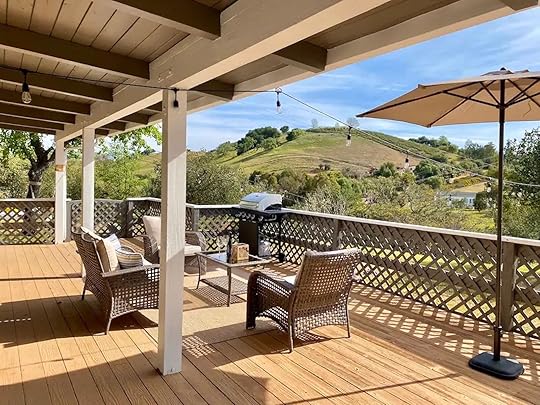
Photo: Airbnb

Photo: Airbnb

Photo: Airbnb

Photo: Airbnb
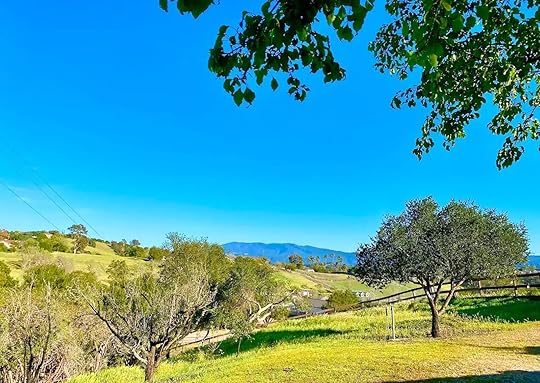
Photo: Airbnb
A few minutes from downtown Solvang, this spacious guest house sits on three idyllic acres where it’s common to see goats, llamas, and horses roaming in the distance, as well as critters like rabbits and birds scampering around the backyard. The property feels like a world unto itself when you’re lounging on the grill-equipped deck, gazing ahead at the rolling hills, but you’re surprisingly close to all the best shops, restaurants, markets, bakeries, and tasting rooms in the area. With one king bed and two large twin beds, the house fits pour people perfectly, which is the maximum number of guests the host will allow.
Two bedrooms, four guests
Price: $344 per night

Photo: Airbnb

Photo: Airbnb

Photo: Airbnb

Photo: Airbnb
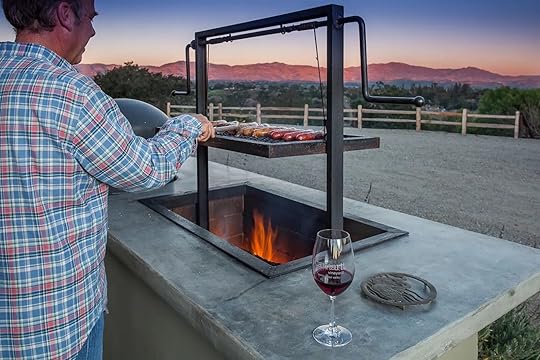
Photo: Airbnb
Bachelorette weekend, family reunion, couples getaway — this gorgeous three-bedroom vineyard house is ideal for special occasions. It’s pricey for a small group, but if you fill all three bedrooms, you’ll get a surprisingly good deal — plus a 20 percent discount if you stay for a week. Once you’re checked in, there’s a good chance you won’t want to leave the property at all — who would when you have a jacuzzi, wood and gas grills, a pizza oven, a bocce court, a picnic area, a fireplace, a fully equipped kitchen, and all the modern audio-visual amenities.
Three bedrooms, six guests
Price: $621

Photo: Airbnb

Photo: Airbnb

Photo: Airbnb
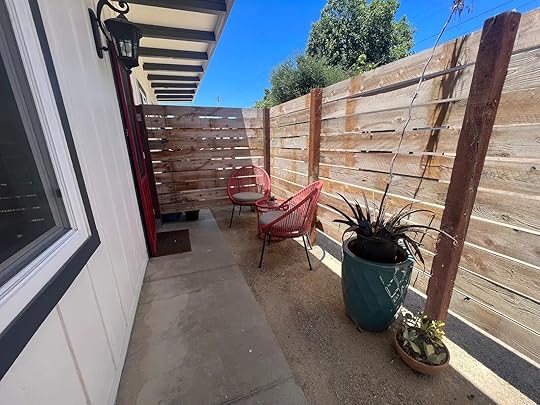
Photo: Airbnb
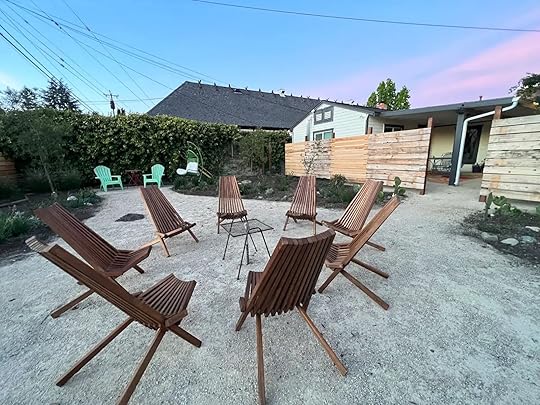
Photo: Airbnb
When it comes to Solvang Airbnbs, it doesn’t get more central than this studio-sized rental. The unit belongs to the Roaming Gnome Guest Ranch, which specializes in mid-century cottages located just two blocks from Solvang’s main drag and iconic windmill. Every unit has a private patio, as well as access to a shared yard with hammock chairs for lounging. At 275 square feet, the studio comfortably fits two guests, but the host is okay with squeezing in a family of three for an extra fee.
Studio, two people
Price: $188 per night

Photo: Airbnb
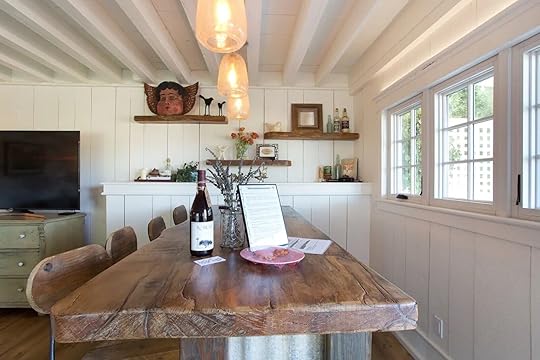
Photo: Airbnb

Photo: Airbnb
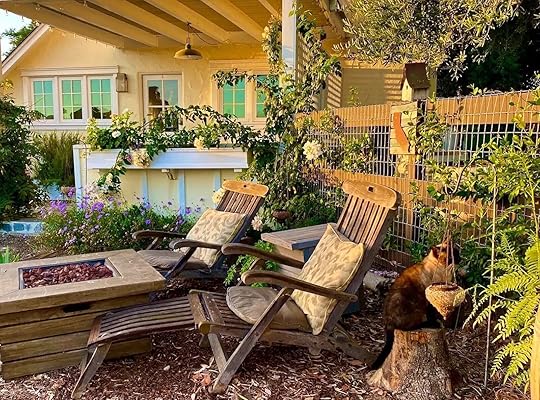
Photo: Airbnb
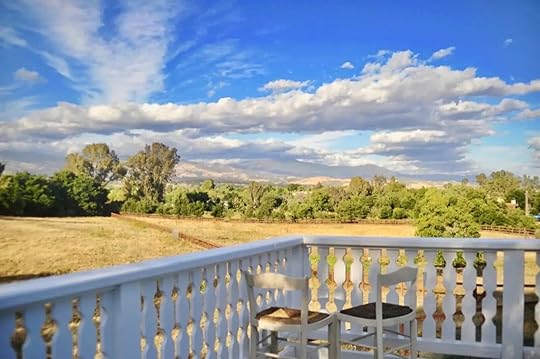
Photo: Airbnb
Animal lovers, this one’s for you. At this one-bedroom guest house in Ballard’s wine country, guests share the property with goats, sheep, horses, and alpacas that you’re welcome to get friendly with — there’s even a designated feeding area in your private yard. (Guests also have access to a private garden.) Because of the animals, as well as features like the balcony and fire pit, only adults are allowed to stay the Anavo Farm Retreat, and the host enforces a two-guest maximum.
One bedroom, two guests
Price: $369 per night
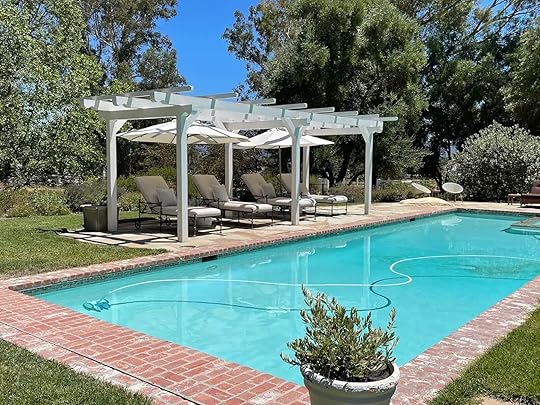
Photo: Airbnb

Photo: Airbnb

Photo: Airbnb

Photo: Airbnb
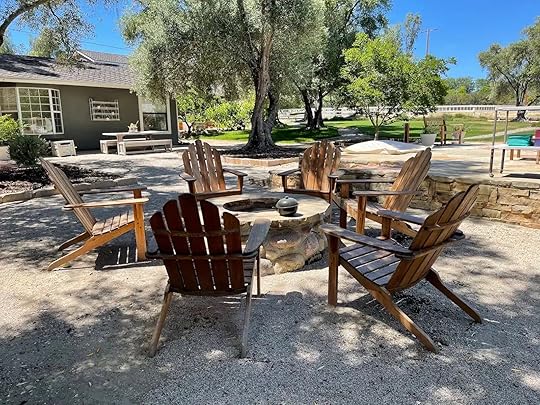
Photo: Airbnb
The first thing you’ll notice about this one-bedroom guest house in Ballard is the pool. The pool is solar-heated, meaning it gets chilly in the winter, but there’s a hot tub available for year-round use, as well as a fire pit you can huddle around on colder nights. The second thing you’ll notice about the property is that it never seems to end. It sits on five acres that guests are welcome to wander freely, complete with olive trees that create scenic spots to picnic. The house itself is chicly designed and well-appointed, although there’s only a kitchenette with a microwave, refrigerator, and wet bar but no stove or oven.
One bedroom, two guests
Price: $400 per night

Photo: Airbnb
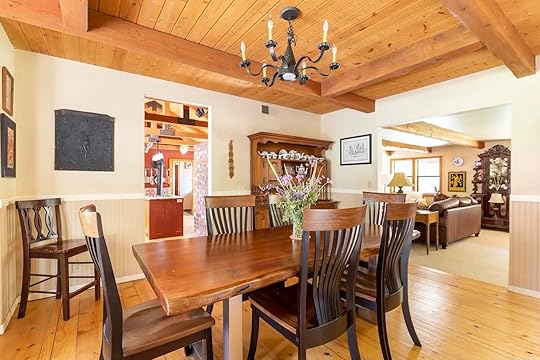
Photo: Airbnb
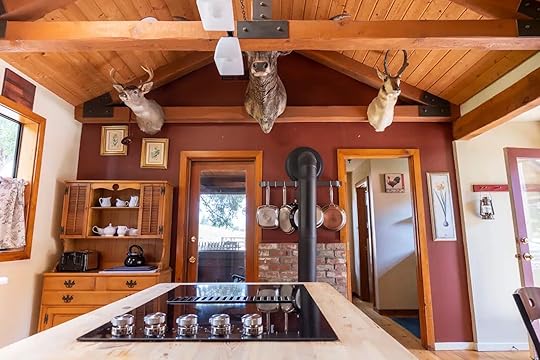
Photo: Airbnb

Photo: Airbnb
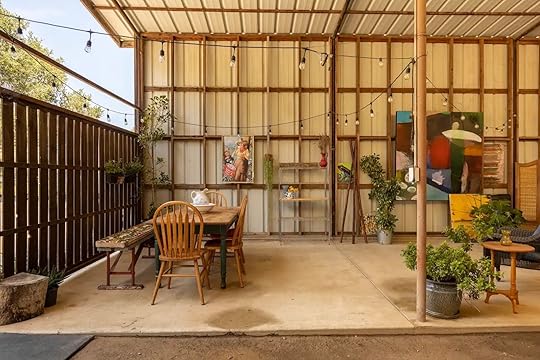
Photo: Airbnb
At first glance, this ranch house between Solvang and Los Olivos seems too big for solo travelers or small groups. It has three bedrooms, the dining table is set up for six, and the property spans 20 acres with room for cows and chickens. But the host invites anyone to enjoy the rustic yet refined home and has it priced accordingly: The base rate for a single traveler occupying one bedroom is $260 per night, and the total rate scales depending on how many people plan to visit. Because of its prime wine country location and, more importantly, the presence of livestock on the grounds, only guests ages 21 and are permitted to book.
Three bedrooms, six guests
Price: $260 per night 
9 of the Best Adults-Only All-Inclusive Resorts in the Americas

We get it People love their children and don’t mind other people’s little darlings, either. But if it’s serious R&R you’re after, a pool full of screaming kids and the thumping bass of an endless pool party isn’t going to help your cause. If you’re looking for an opportunity to truly — and we mean truly — wind down, look no further than these adult only all inclusive resorts that place a heavy emphasis on relaxation.
Each of the following picks has its own distinct atmosphere and vibe — from the secluded and luxurious, to the indulgently hedonistic: think easy-breezy sun and sand spots, tranquil forest getaways, foodie-approved gourmet havens, and more. But the one thing they do all have in common? Their efforts to create an oasis of calm where everyone can fully embrace the joys of adulthood. No crying babies interrupting your hangover, no asking for the kids’ menu, no teens running feral. Just pure unadulterated relaxation. Heaven.
So whether you’re taking a baecation, or you just want to avoid other people’s sprogs where humanly possible, here are some of the best adult only all inclusive resorts to try out for size.
We hope you love the adult only all inclusive resorts we recommend! Just so you know, Matador may collect a small commission from the links on this page if you decide to book a stay.
All inclusive resorts in the United StatesAll inclusive adults only resorts in MexicoThe best Caribbean resorts for couplesAll inclusive resorts in the United States
The range of options here is outstanding, but if you are looking for the best all inclusive resorts in the US, we’ve got you covered with the following suggestions. From a ranch in Montana, a vast resort in Florida, to a French-inspired retreat in Napa Valley, these are the cream of the crop.
1. Triple Creek Ranch, Montana, US

Photo: Triple Creek Ranch

Photo: Triple Creek Ranch

Photo: Triple Creek Ranch

Photo: Triple Creek Ranch
Located on 10,000 acres of wilderness in southwest Montana, Triple Creek Ranch has everything you need to feel as if you’ve been whisked off to another world: oversized bedrooms with wood-burning fireplaces; plush robes and slippers; and cozy lounging areas where you can curl up with a book. It’s like having your own private lodge that boasts all the comforts of home.
The owners have gone to some pretty extreme lengths to ensure that guests have an array of winding down options to choose from — From fly fishing (with complimentary fly-casting clinics, equipment included) to skiing, swimming, meditation, yoga, candle-making, winter dog sledding and more. That’s something to keep you occupied every day of your stay.
It doesn’t hurt either that Triple Creek’s kitchens are run by Chef Jacob Leatherman, who’s been cooking up gourmet dining experiences at the lodge for over 15 years. But perhaps best of all is their enviable wine cellar, this luxury resort’s crown jewel. The expansive list features tons of Big Sky Country’s finest vintages — mostly from at-home wineries — meaning wine buffs will never run out of options for activities built around sipping.
2. The Point Resort, New York, US

Photo: The Point Resort

Photo: The Point Resort

Photo: The Point Resort
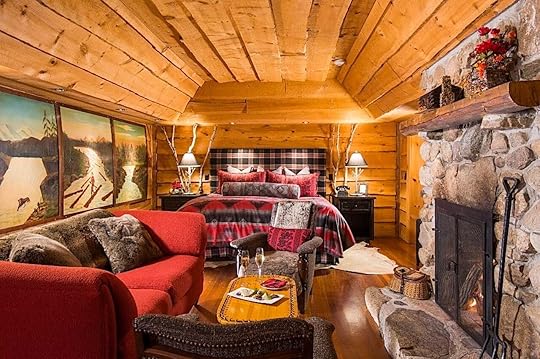
Photo: The Point Resort
If your idea of New York equals bright lights, big city, then this adults-only haven will tip all that on its head. Hidden away in a six-million-acre park, this resort is a paradise of shimmering lakes, soaring mountains, and sweet pine-scented air.
Guests here can choose between woodside cabins or waterfront boathouses, all of which have wall-to-wall views of the very best nature has to offer. There’s black-tie-suggested dining on Wednesdays and Saturdays, and plenty of activities to choose from — think kayaking, tennis and fishing for sporty types, plus seaplane tours and island picnics for that once-in-a-lifetime treat. After a day spent on the water, head back and unwind: cocktails on the flagstone terrace, a moonlit stroll to the bonfire area — or perhaps reclining on a plush sofa by the piano is all you can muster.
3. Bungalows Key Largo, Florida, US

Photo: Bungalows Key Largo

Photo: Bungalows Key Largo

Photo: Bungalows Key Largo

Photo: Bungalows Key Largo
If all-inclusive conjures up images of stale buffets and a round of sunlounger stand-off with the other guests, here’s one to change your mind. Bungalows Key Largo is all-inclusive done right: a luxury resort that’s small enough to feel like a home-from-home, with spacious bungalows and suites scattered around the lush 12-acre grounds.
The resort has two pools and they run yoga exercise classes — if you feel like being active. On the water, there’s snorkeling and paddleboarding, kayaking, island-hopping and tiki boats, which you can book an excursion. And when it comes to eating out, all of the Bungalows’ restaurants present locally sourced dishes: choose between Fish Tales (that’s casual dining overlooking the ocean), Sea Señor (freshly caught and cooked seafood with a Mexican lean), or Bogie and Bacall’s (fine dining and costs $300 extra for two people).
4. Auberge du Soleil, California, US
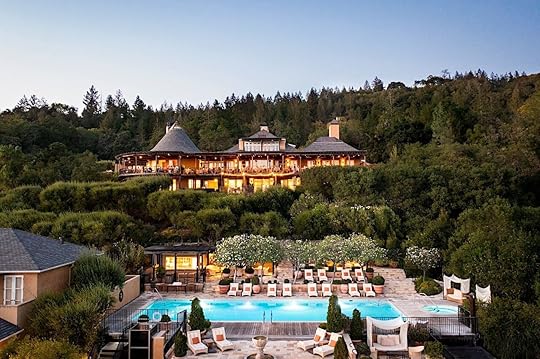
Photo: Auberge du Soleil
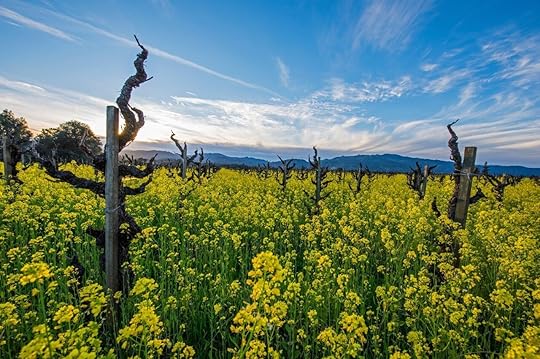
Photo: Auberge du Soleil

Photo: Auberge du Soleil

Photo: Auberge du Soleil
Although this is the only one of our adult only resorts in the United States that’s not all-inclusive, Auberge du Soleil is worth a mention. Unlike wine and cheese, kids and tipple-tasting just don’t mix — and the owners of Auberge du Soleil think so too. This luxury boutique hotel is nestled slap-bank in California’s Napa Valley, an hour’s drive from San Francisco. The hotel is surrounded by vineyards, so if you want to feel like you’re in one of those wine adverts where the sun always shines, here’s your chance.
The rooms are all unique, but all feature French doors opening onto decked terraces with pool or garden views. Glass-walled bathrooms sit alongside freestanding tubs, while high ceilings give way to floor-to-ceiling windows that flood your room with natural light. Banish any jet lag during a massage at the spa before a sunset cocktail and dinner at the Michelin star-winning restaurant. Offering Californian cuisine with French flair, take your pick from fresh oysters, juicy steaks, and an array of locally sourced specialties whipped into shape by Executive Chef, Robert Curry.
All inclusive adults only resorts in Mexico
There’s also a huge selection of all inclusive resorts in Mexico but not all are adult only. Many cater to family holidays, so if you are looking for a peaceful or the best vacation spots for couples, here’s out picks, all without the soundtrack of screaming children.
5. Marquis Los Cabos, Mexico

Photo: Marquis Los Cabos

Photo: Marquis Los Cabos

Photo: Marquis Los Cabos

Photo: Marquis Los Cabos
Arguably the best adult only all inclusive resort in Mexico and hidden on a stretch of unspoiled coastline between San Jose del Cabo and Cabo San Lucas, Marquis Los Cabos is surrounded by majestic mountains and bright turquoise waters. The chic property features 26 casitas equipped with ultra-deep jetted tubs, Mexican artwork, and spacious private balconies for soaking up the rays. Oh, and they all come with sea views, so that’s unadulterated sunsets on tap (minus rowdy spring-breakers playing frisbee).
The resort has a glittering central pool, plus two infinity numbers, all surrounded by five gourmet restaurants bursting with local and international flavors to sample. Winding things down even further is easy thanks to the resort’s 13,000 square-foot spa, which includes an array of treatment options for upping the relaxation: think indulgent body wraps, soothing massages, and facials enriched with diamond extract.
6. Hotel Xcaret, Mexico

Photo: Hotel Xcaret

Photo: Hotel Xcaret

Photo: Hotel Xcaret

Photo: Hotel Xcaret
Since the best all inclusive resorts in the Riviera Maya have a reputation for boozy pool parties, it may come as a bit of a surprise to find this hidden oasis slap bang in the middle of it all. Not only is this adults-only spot seriously serene: it’s also the first hotel in the Americas to win an EarthCheck certification for its sustainability — so you can kick back and relax from an ethical standpoint as well.
A great place to get away from the hustle and bustle of hectic daily life, Hotel Xcaret is set in 30 acres of lush tropical gardens. Enjoy two outdoor swimming pools, or unwind with a spa treatment at their world-class wellness complex.
The best Caribbean resorts for couples
We’re focusing on squarely on the best all inclusive resorts in the Caribbean for couples in this section. We’re talking tailor-made romantic packages, candlelit dinners, dreamy accommodation, and even a clothing-optional property.
7. Jade Mountain Resort, St Lucia
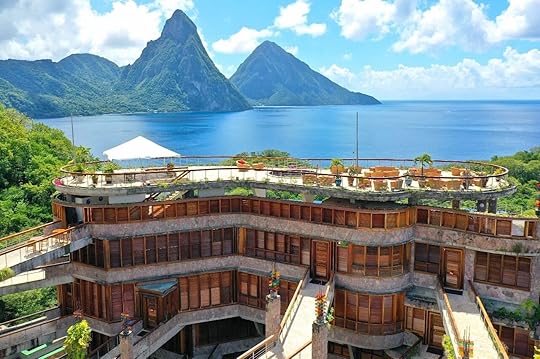
Photo: Jade Mountain Resort

Photo: Jade Mountain Resort

Photo: Jade Mountain Resort

Photo: Jade Mountain Resort
Jade Mountain is an oasis of luxury perched upon a cliffside with spectacular sea views backed by jagged mountains. You’ll find luxurious amenities throughout, including marble bathrooms with waterfall showers with island views, a private pool in every suite and 24-hour butler service. When it comes to views, this one’s the pick of the crop: each room only has three walls, so there’s absolutely nothing standing between you and that magnificent Caribbean backdrop — save a chilled glass of local rum, that is.
A chiseled stone and glass creation with a strong sense of style, Jade Mountain is luxurious with a capital L. But what’s surprising about this resort is how many activities they have on offer for their guests, from bike tours to yoga classes and scuba diving — so you can mix your relaxation with some adventure, too.
8. Hedonism II, Negril, Jamaica

Photo: Hedonism

Photo: Hedonism II

Photo: Hedonism II
With its lazy river, white sand beach and all-day dining restaurant serving everything from grilled fish to jerk chicken, Hedonism II is the perfect destination for those who just want to relax. But, nice as this all is, it’s not the main pull. Not by far…
Hedonism by name, hedonism by nature: this clothing-optional resort is one of the best swinger’s resorts in the world. Kick back on the world-famous Seven Mile Beach, sink a fruity cocktail or two, then try out one of the adult activities: we’re talking themed parties, playrooms, and naked discos aplenty. Yes, Hedonism II has everything you need to enjoy your swimsuit-free holiday by day…and, um…your fellow guests by night. Ahem.
9. Renaissance Wind Creek Aruba Resort

Photo: Renaissance Wind Creek Aruba Resort

Photo: Renaissance Wind Creek Aruba Resort

Photo: Renaissance Wind Creek Aruba Resort

Photo: Renaissance Wind Creek Aruba Resort

Photo: Renaissance Wind Creek Aruba Resort

Photo: Renaissance Wind Creek Aruba Resort
Renaissance Wind Creek Aruba Resort offers a serene escape, with a giant pool and a prime beachfront location. The property’s accommodations feature LCD TVs, rain showers, spacious balconies and marble bathrooms with jetted tubs. Then there’s the chandelier-lit casino, designer shops, ocean views and this spot is shaping up to have all the trimmings of luxury getaway.
Located on one of the best Caribbean islands Aruba, in the capital city, Oranjestad, this resort offers two types of accommodation: the family-friendly Renaissance Ocean Suites and the adults-only Renaissance Marina Hotel, starting at $179. That’s a super-affordable rate if you want to get away from screaming toddlers, compared to other adults-only hotels in the area (other nearby resorts start at $350). Throw in free breakfast and a newly revamped private island that’s only accessible to guests of the hotel, and you’ve got yourself a deal. 
Matador Network's Blog
- Matador Network's profile
- 6 followers




